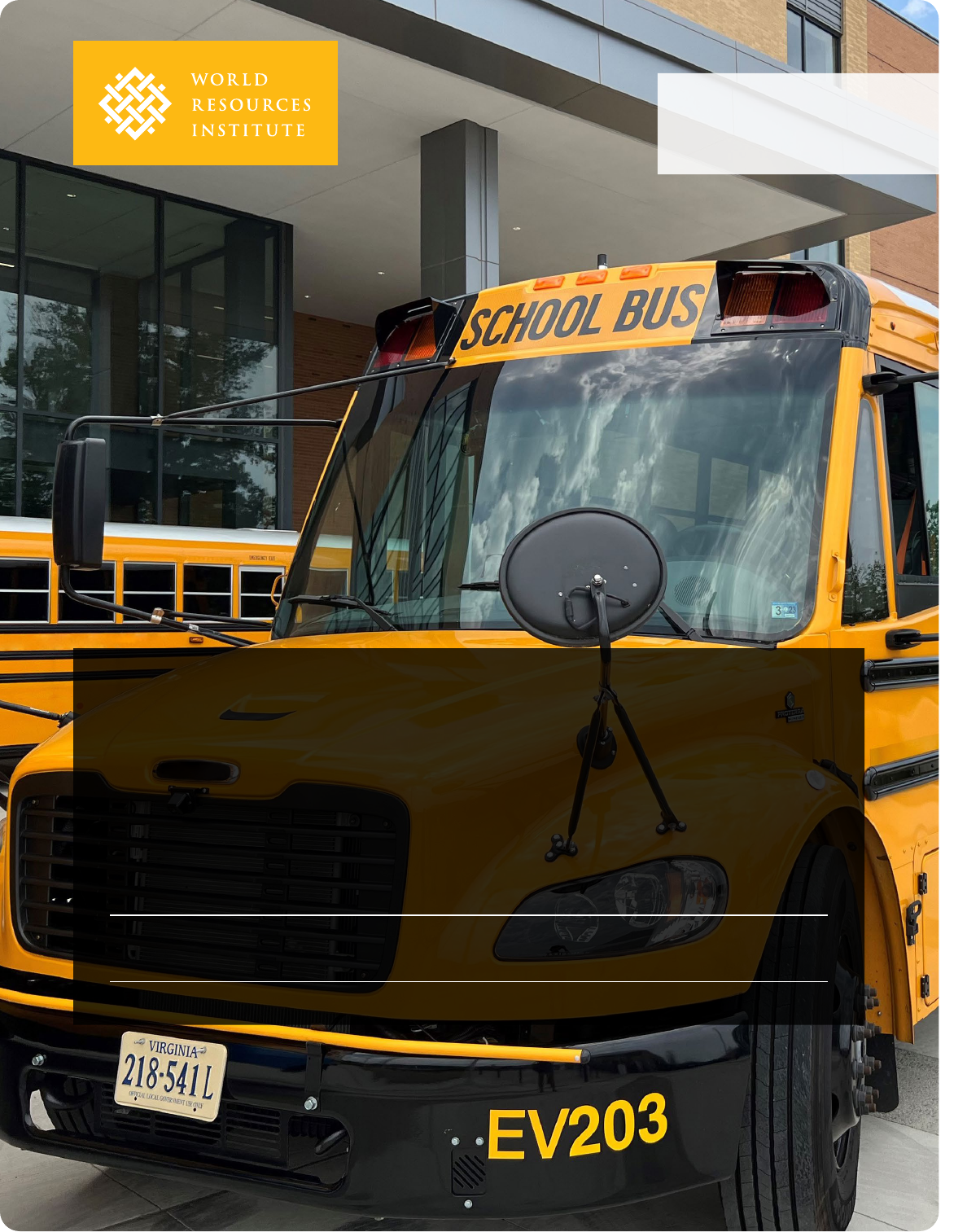
ELECTRIC SCHOOL BUS U.S. MARKET
STUDY AND BUYER’S GUIDE:
A Resource for School Bus Operators Pursuing
Fleet Electrication
ALISSA HUNTINGTON, JESSICA WANG, PHILLIP BURGOYNE-ALLEN,
EMMETT WERTHMANN, AND ELEANOR JACKSON
WRI.ORG
ISSUE BRIEF

2 |
CONTENTS
Executive Summary 2
1. Status of the Electric School Bus Market 3
2. Electric School Bus Basics 10
3. Summary of Available Electric Bus Models 17
4. Conclusion 26
Appendix A. Key Terms and Definitions:
Comparing Diesel and Electric School Buses 27
Appendix B. Additional Resources 29
Glossary 31
Endnotes 32
References 33
Acknowledgments 38
About the Authors 38
About WRI Electric School Bus Initiative 38
About WRI 39
Photo Credits 39
EXECUTIVE SUMMARY
Highlights
▪
School districts across the United States have started
transitioning to electric school buses (ESBs). As of
March 2022, 415 districts (or private eet operators)
had committed
1
to procuring 12,275 ESBs across 38
states and a range of operating conditions. States and
municipalities are setting electrication goals while
manufacturers scale production.
▪
Compared with the typical school bus that runs
on diesel fuel, ESBs have the potential to lower
operations and maintenance costs for eets and have
zero tailpipe emissions. Their large batteries can store
and deliver energy using “vehicle-to-everything”
technology, to power buildings and other devices,
which can support greater resiliency, including
through the integration of renewable energy. ESBs
also have the potential to generate revenue by
discharging energy from their batteries back onto the
grid, lowering utility costs and emissions. Though
this is a nascent market, technological advancements
should make this widely available in the near future.
▪
As of January 2022, 22 ESB models were available
from 12 manufacturers for Type A, C, and D buses: 14
newly manufactured vehicle models and 8 repowered
vehicle models.
2
There is the largest selection
of Type A models. Type C models are the most
commercially ready.
▪
Each generation of buses is more advanced than the
previous: Many manufacturers are on their second
or third iteration, some even further along. Electric
school buses have ranges of up to 210 miles for Type C
buses; all Type A, C and D buses listed oer over 100
miles of range, enough to cover most bus routes.

Electric School Bus U.S. Market Study and Buyer’s Guide: A Resource for School Bus Operators Pursuing Fleet Electrification
ISSUE BRIEF | June 2022 | 3
Context
Momentum around electric school buses (ESBs) is
growing in the United States as school districts across
the country transition to this cleaner and healthier
technology, bolstered by an infusion of new funding
from the federal government. The ESB transition
will require a coordinated eort among numerous
entities, including school district leadership and sta,
school bus manufacturers and contractors, utilities,
policymakers, regulators, local advocacy organizations,
and community members.
This publication is intended to serve as a resource
primarily for school districts, transportation directors,
and other school bus operators exploring school bus
electrication to provide a better understanding of the
state of the ESB market and available oerings. It aims
to present the growing interest and investment in this
sector along with key aspects of the current technology.
In Section 1, we explore the growing demand for these
buses and how manufacturers are positioning themselves
to meet that demand through a scan of the market.
Next, in Section 2, we explain key components of an
ESB and discuss the charging and related infrastructure
that is needed to support these buses. The core element
of the publication, Section 3, presents a catalog of the
22 ESB models available as of early 2022 with detailed
vehicle specications allowing readers to compare
various models and weigh important considerations.
We conclude by summarizing the status of school bus
electrication to date.
Approach and Methodology
The content of this publication has been gathered from a
variety of sources, with information on models available
in the United States from publicly available vehicle
specications sheets conrmed through discussions with
bus manufacturers when possible.
We explored school district experiences with ESBs
representing a variety of use cases in the United States—
rural, suburban, and urban; warm and cold weather,
including extreme temperatures; and early adopters
further along in the process, as well as those in earlier
stages of procurement. We compiled recent research
and reporting on school district commitments and
experiences and supplemented public information with
conversations with school districts and other partners. We
plan to update this publication annually as new vehicles
come to market and existing models are altered.
This resource is one of many from World Resources
Institute’s Electric School Bus Initiative and is intended
to be updated to expand upon topics like funding
and nancing, alternative service models, and utility
engagement.
3
1. STATUS OF THE ELECTRIC
SCHOOL BUS MARKET
There are nearly half a million school buses in the United
States that transport more than 20 million children to
and from school (FHA 2019; SBF 2021a). More than
90 percent of school buses on the road today are diesel
powered, but interest in ESBs has grown in recent
years (APP 2022). There are 12,275 ESB commitments,
representing around 2.5 percent of the current eet
size (Lazer and Freehafer 2022). The ESB market was
established in 2014, when two California school districts,
Kings Canyon School District and Escondido Union
High School District, became the rst school districts
to operate ESBs. Kings Canyon’s four early Trans Tech
models carried 25 students each and were able to travel
between 80 and 100 miles on a charge while Escondido’s
TransPower bus had a range of approximately 60 miles
(MPS 2014; Edelstein 2014; Adams 2014).
Since 2014, hundreds of other school districts across the
United States have begun to embrace eet electrication,
manufacturers have positioned themselves to meet
growing demand, and school bus electrication has
gained traction (Figure 1).
1.1 Rising Demand
A combination of factors is priming the market for ESB
adoption. Compared with the typical school bus that runs
on diesel fuel, ESBs have the potential to lower operations
and maintenance costs for eets and have zero tailpipe
emissions (Figure 2). If equipped with bidirectional
charging technology, ESBs can provide additional
benets, such as potentially acting as mobile generators
in an emergency.
Inuenced by these benets, communities and
policymakers are advocating for ESBs, which has resulted
in commitments to electrication. Implementation of
these commitments is aided by grants and incentives to
bring down the upfront price of the buses (Box 6).

4 |
CUMULATIVE NUMBER OF ELECTRIC SCHOOL BUSES COMMITTED BY QUARTER IN THE
UNITED STATES
Notes: This graph depicts electric school bus (ESB) commitments at the earliest confirmed phase in the commitment process (awarded, ordered, delivered, or first operating)—286 ESBs
were excluded due to unknown dates of their commitment stages. Abbreviation: Q = quarter.
Source: Based on Lazer and Freehafer 2022.
FIGURE
2014
Q1
‘14
Q2
‘14
Q3
‘14
Q4
‘15
Q1
‘15
Q2
‘15
Q3
‘15
Q4
‘16
Q1
‘16
Q2
‘16
Q3
‘16
Q4
‘17
Q1
‘17
Q2
‘17
Q3
‘17
Q4
‘18
Q1
‘18
Q2
‘18
Q3
‘18
Q4
‘19
Q1
‘19
Q2
‘19
Q3
‘19
Q4
‘20
Q1
‘20
Q2
‘20
Q3
‘20
Q4
‘21
Q1
‘21
Q2
‘21
Q3
‘21
Q4
‘22
Q1
0
2000
1000
12,000
11,000
2
2
2
3
3
33
3
33
3
33
3
33
3
33
3
33
3
3
5
5
5
8
8
8
9
9
99
9
9
22
22
22
80
80
80
85
85
85
91
91
91
93
93
93
100
100
100
154
154
154
161
161
161
185
185
185
204
204
204
446
446
446
560
560
560
611
611
611
677
677
677
780
780
780
821
821
821
1202
1202
1202
1462
1462
1462
1555
1555
1555
11,682
11,989
First U.S. Electric School Buses
Begin Operation
California’s Kings Canyon School
District and Escondido Union High
School begin operating first electric
school buses with one each
Large Award of State Funding
in California
The California Energy Commission
approves nearly $70 million in funding
to replace more than 200 diesel school
buses with all-electric buses
Large Award of State Funding
in California
The California Energy Commission
approves nearly $70 million in funding
to replace more than 200 diesel school
buses with all-electric buses
First Large-Scale Utility Program
Dominion Energy announces it will
oset the additional cotsts of an electric
school bus, including charging
infrastructure, for 50 buses across its
Virginia service territory
Largest Procurement of Electric
School Buses
Montgomery County Public Schools, MD,
announces it will replace 326 diesel
school buses with electric school buses
over four years through a contract with
Highland Electric
Largest Partnership for
Repowered Buses
SEA Electric and Midwest Transit
Equipment announce they will partner
to convert 10,000 school buses to
electric over five years
SAMPLE OF ELECTRIC SCHOOL BUS BENEFITS AND CONSIDERATIONS
Sources:
a.
Levinson 2022; Energetics Incorporated et al. 2021; Ercan et al. 2016;
b.
EDF 2021;
c.
Liu and Grigg 2018; Espinoza and Vemireddi 2018; Vieira et al. 2012;
d.
Austin et al. 2019;
e.
BTS
2021; FHA 2019;
f.
ANL 2020, comparing five fuels for school buses: electric, compressed natural gas, propane, diesel, and biodiesel. Utilizing various electricity mixes for electric school
busesand North American natural gas for compressed natural gas. Based on 15,000 miles per bus per year;
g.
U.S. PIRG n.d.;
h.
Hutchinson and Kresge 2022.
FIGURE
Lower Operations
and
Maintenance Costs
Research suggests that after the upfront cost, electric school buses
could save districts an estimated $4,000–$11,000 per school bus every
year on operational expenditures like fueling and maintenance and
repair costs (depending on labor costs, local electric utility rates, and
the price of petroleum fuels). Today, these savings alone are insuicient
to cover the vehicle price dierential without additional grant funding
or subsidies.
Health Benefits
There is increasing evidence that children are particularly susceptible
to the negative health impacts of diesel exhaust, which has been linked
to increased risk for asthma and pneumonia (Box 1). There is also
evidence that reducing this exposure can improve not just respiratory
health but also standardized test scores, especially for elementary-age
students. While there has been little research measuring the air quality
benefits of electric school buses specifically, these results strongly
suggest that adopting these vehicles— which have zero tailpipe
emissions— would have positive eects on students’ health and
academic outcomes, particularly for low-income students and Black
students, who are more likely to ride the school bus than their peers.
Climate Benefits
For school buses, electricity emits half as many greenhouse gas
emissions annually as the next-best fuel. Electricity is the only
viable fuel that will reduce greenhouse gas emissions over time
and as buses age as the grid integrates more renewables. Buses
can also be paired with on-site renewable energy projects.
Resilience and
Grid Potential
Electric school buses have the potential to serve as mobile
generators for buildings during outages (vehicle-to-building; V2B),
for the grid during high energy demand (vehicle-to-grid; V2G), or
for another load (vehicle-to-another-load; V2L). This technology is
constantly being improved upon, and manufacturers are working
actively to understand the impacts of higher charge and discharge
cycles on battery life. Charging electric school buses o-peak and
under managed charging oers grid benefits today by not charging
when energy demand is highest or by charging when renewable
energy is abundant.

Electric School Bus U.S. Market Study and Buyer’s Guide: A Resource for School Bus Operators Pursuing Fleet Electrification
ISSUE BRIEF | June 2022 | 5
HEALTHIER AIR FOR STUDENTS IN STOCKTON, CALIFORNIA
The residents of Stockton Unified School District (SUSD) experience some of the highest asthma rates in California, with the state ranking
Stockton in the 96
th
percentile for pollution burden and the 100
th
percentile for asthma. SUSD saw the conversion to ESBs as a way to help
improve air quality and protect student health.
With a host of partners, SUSD applied for the California Air Resources Board’s (CARB’s) Clean Mobility in Schools Project and was ultimately
awarded $4.8 million from the state program. SUSD leveraged the CARB grant to secure additional sources of funding from utility, local, and
state programs. In total, SUSD secured $8.3 million for 11 ESBs and charging infrastructure (a mixture of direct current fast and level 2 chargers;
see Table 1 for distinction) for 24 buses in phase one of the pilot.
SUSD’s pilot moved quickly despite COVID-19 budget cuts and constraints. SUSD received the initial CARB grant on January 7, 2020, had funds
approved by April, broke ground on the bus charging infrastructure in September 2020, and had the charging infrastructure operational in
December 2020. The district aims to eventually convert all 96 of the school district’s buses.
In addition to focusing on the air quality benefits of ESBs, SUSD engages students in clean energy projects to demonstrate that the green jobs
of the future are for them. “Zero-emission buses are a symbol of hope and a means of change for communities like Stockton,” says Gil Rosas
who was SUSD’s energy education specialist during its ESB transition. “Stockton has shown how a disadvantaged community can go from
design to construction to electric school buses in less than a year.”
Source: Rosas 2021. Learn more about Stockton’s experience by visiting Kaplan, L., and A. Huntington. 2021. “The Electric School Bus Series: Healthier Air for Students in Stockton,
California.” Washington, DC: World Resources Institute. https://www.wri.org/update/electric-school-bus-series-stockton-california.
BOX
Community Support
Community members can drive demand for school
bus electrication. Grassroots organizations and
advocacy groups, often made up of parents and other
caregivers, have been eective at pushing school district
commitments and creating policy changes. At the
national level, Chispa LCV has been driving the ESB
conversation since 2016 by creating the "Clean Buses
for Healthy Niños" campaign to ask decision-makers to
prioritize ESBs when spending the Volkswagen settlement
funds,
4
forming the Alliance for Electric School Buses,
and championing the numerous benets ESBs bring to
communities (Chispa n.d.). Its volunteers have supported
legislation in Nevada and helped hold school districts
to their commitments in Arizona (Schlosser 2021). In
Virginia, Mothers Out Front helped get Virginia Delegate
Mark Keam’s ESB bill passed (MOF n.d., 2021; FCPS
2021a). In New York, advocacy from groups helped push
both New York City’s and New York State’s commitments
to transition the eet by 2035 (News 12 Sta 2022;
EarthJustice 2022; Kaye 2022; CNY 2021). Students
have also been eective changemakers, especially at the
school district level. For example, in Miami, student
pressure at school board meetings helped convince the
district to pursue a grant for 50 ESBs (Casey 2021).
These are just a few examples of how communities have
driven demand for ESBs by advocating for their children’s
health and safety.
Policy Commitments
Policy commitments can inuence speed of adoption.
The New York State budget for scal year 2023 includes
a new, nation-leading requirement for all new school
bus purchases in New York State to be zero emission
starting in July 2027 (Lewis 2022). All school buses in
service statewide must be zero emission by 2035. The new
law also requires the New York State Energy Research
& Development Authority to oer technical assistance
to school districts and publish an implementation
roadmap. The legislation further allocates $500 million
in potential state funding for school bus electrication.
This new funding, part of a larger environmental bond
act, is subject to voter approval in November 2022. In
California, the governor’s budget proposal, currently
being considered in the state legislature, would allocate
$1.5 billion in one-time funding, available over three
years, to support school transportation programs, with a
focus on greening school bus eets (Gray 2022).

6 |
At the local level, Fairfax County Public Schools in
Virginia, with 1,625 school buses, one of the largest eets
in the country, adopted a goal for full eet electrication
by 2035 (FCPS 2021b; Schlosser 2019). In addition, after
receiving North Carolina’s rst ESB earlier this year, the
Eastern Band of Cherokee Indians set a goal of becoming
the rst school system in the state to electrify its full
eet and has already ordered four additional ESBs that
are expected to be delivered this summer (WLOS Sta
2022; Kays 2022).
Grants and Incentives
As of April 2022, about 80 percent of school districts
or eet operators with committed ESBs had only one
batch of ESBs so far—20 percent (83 school districts
or eet operators) had between two and four batches.
5
Funding at the utility, local, state, and federal levels
has catalyzed adoption, with school districts leveraging
A RURAL COUNTY’S EXPERIENCE WITH ELECTRIC SCHOOL BUSES
KNOX COUNTY, MISSOURI
After success with on-site solar, Knox County R-I School District—the second largest geographically in Missouri—began looking for other ways
to reduce expenditures, increase revenues, and expose students to a growing field that could oer well-paying clean energy jobs within their
own community. At the suggestion of Lewis County REC, the district’s electric cooperative, Knox County Superintendent Andy Turgeon and his
team turned their sights to an ESB.
In 2020, the district began searching for funding, ultimately securing four grants—one state, one federal, and two from utilities: Department
of Natural Resources Volkswagen settlement funding ($169,126); U.S. Department of Agriculture’s Community Facilities program ($116,626);
Associated Electric Cooperative Inc. ($30,000); and Lewis County REC ($15,000).
The district received its ESB six months after placing an order. The school district had slight challenges with regenerative braking and the
direct current to direct current (DC-DC) converter. When installing USB (universal serial bus) ports in the bus, one of the relay switches that
operates the regenerative braking was knocked loose. Turgeon and his team quickly identified and fixed the issue after plugging in a laptop
for remote communication and diagnostics. For the DC-DC converter, the cameras Knox County School District installed on the bus were not
shutting o and were draining the onboard 12-volt battery. Once identified, the manufacturer sent a new onboard battery and the bus mechanic
installed it within an hour.
Overall, Turgeon and the drivers have enjoyed the bus, noting how quiet and smooth the rides are. Looking ahead, Knox County schools
believe that full electrification of their 14-bus fleet is in their future and have already applied for grants for two more buses through the state’s
Department of Natural Resources.
Source: Turgeon, A. 2021. Learn more about Knox’s experience at Huntington, A., and L. Kaplan. 2021. “The Electric School Bus Series: Wiring Up in Knox County.” Washington, DC: World
Resources Institute. https://www.wri.org/update/electric-school-bus-series-knox-county.
BOX
dozens of funding sources across the country to oset
the high upfront prices of the buses, which can be three
to four times more than a diesel model (Levinson 2022;
Tables 2, 3, and 4).
States are an important source of funding for school
bus electrication. California has awarded over $116
million for ESBs through its California Hybrid and
Zero-Emission Truck and Bus Voucher Incentive Project
(California HVIP 2022). New York State’s Truck Voucher
Incentive Program and Massachusetts’ Vehicle-to-
Grid Electric School Bus Pilot Program are other early
examples of states providing funding for ESBs (NYSERDA
2022; MDER 2022). Across the board, the state
funding landscape has evolved due to the Volkswagen
settlement funds, which make up over one-third of state
public funding for ESBs allocated to date and are the
primary source of state funding for ESBs in most states
(McLaughlin and Balik 2022; Box 2).
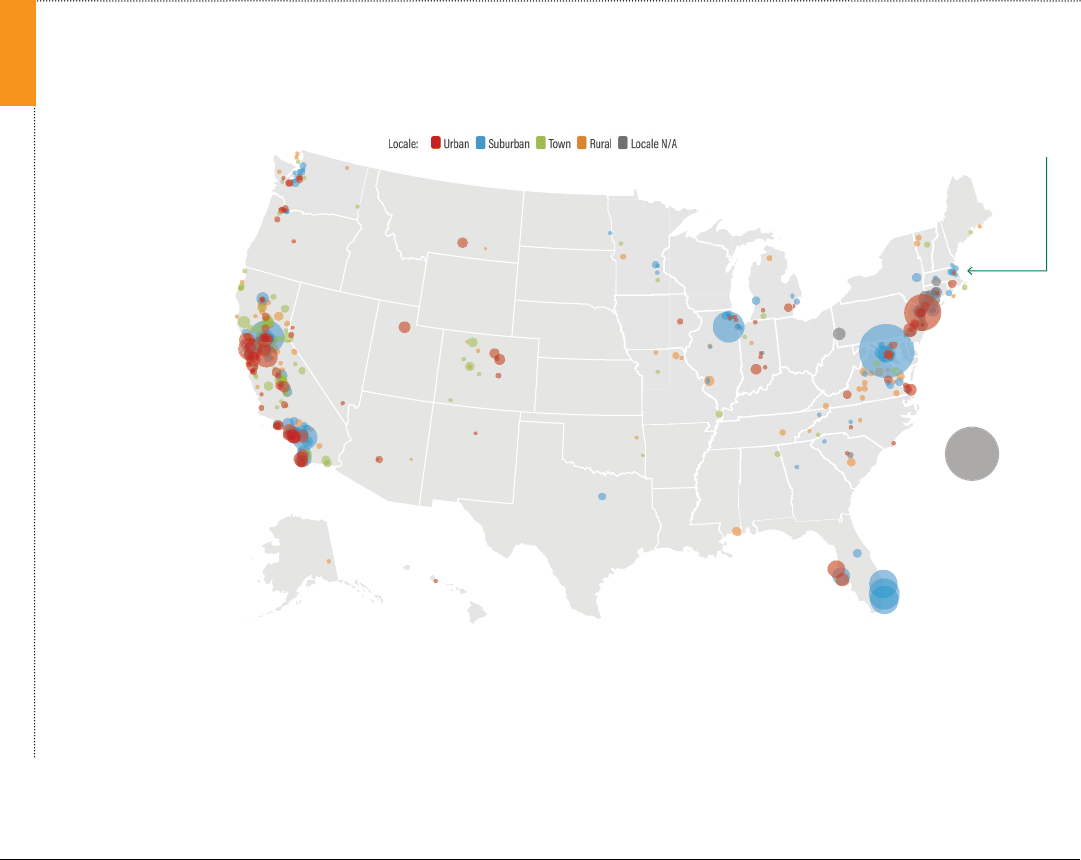
Electric School Bus U.S. Market Study and Buyer’s Guide: A Resource for School Bus Operators Pursuing Fleet Electrification
ISSUE BRIEF | June 2022 | 7
In addition to state and local funding, the bipartisan
Infrastructure Investment and Jobs Act, signed into
law in November 2021, will provide an unprecedented
amount of funding—$5 billion over ve years to the U.S.
Environmental Protection Agency to establish the Clean
School Bus Program—to school districts and other eligible
contractors or entities starting in mid-2022. The program
will oer both rebate and grant programs to support the
replacement of existing school buses with cleaner zero-
or low-emission school buses, which should help bring
down the upfront price school districts pay for electric
models. This funding includes $2.5 billion in dedicated
funding for ESBs and another $2.5 billion for zero- and
low-emission school buses, including both electric and
alternative fuel buses. These programs will prioritize
projects that align with the Justice40 initiative, which
aims to deliver at least 40 percent of overall benets
from federal climate and clean energy investments to
underserved communities.
Current Market Status
School districts and cities across the country are
becoming part of the transition to ESBs, driving up
demand nationwide. As of March 2022, 415 districts (or,
in some cases, private eet operators) had committed to
procuring 12,275 ESBs (Lazer and Freehafer 2022; Figure
3). ESBs are committed in 38 states, the Cherokee Nation,
and the White Mountain Apache Tribe. Most are located
in California, which features robust and long-standing
state funding programs (Box 3).
ELECTRIC SCHOOL BUSES IN THE UNITED STATES
Notes: Data as of March 2022. Midwest Transit Equipment and SEA Electric have not yet announced the location of their 10,000 repowered electric school buses (grey circle).
Sources: Lazer and Freehafer 2022; NCES 2018, 2020; examples gathered by authors.
FIGURE
La
rgest Electric School
Bu
s Fleet (50 buses)
T
win Rivers Unified
School Dist
rict, California
(B
ox 3)
Oldest Elec
tric School
Bu
s Fleets (Est. 2014)
K
ings Canyon Unified
School Dist
rict and
Escondido U
nion High
School Dist
rict, California
Extreme Heat Operations
Cartwright School District, Arizona
Largest Procurement
(326 buses)
Montgomery County
Public
Schools, Maryland
First Cold Weather Pilot
(2016—18)
Amherst, Cambridge, and
Concord, Massachusetts
First-in-Nation Requirement: All
new school bus purchases must
be zero emission starting in July
2027; fully electric fleet by 2035
New York
Extreme Cold Operations
Alaska Gateway School District, Alaska

8 |
BUILDING INTERNAL CAPACITY WITH ELECTRIC SCHOOL BUSES IN TWIN RIVERS,
CALIFORNIA
Twin Rivers Unified School District began operating its first ESBs in 2017. Currently, the school district operates the largest ESB fleet in the
nation with 50 electric Type A, C, and D buses from a variety of manufacturers (Lion, Trans Tech, Blue Bird, and Collins with orders placed for
Micro Bird and Thomas Built Buses). All are newly manufactured models; none are repowered models.
Reflecting on his district’s journey, Twin Rivers Transportation Director Tim Shannon encourages fleets to “think big” at the outset, as doing
multiple upgrades for infrastructure can be burdensome and costly. Depot upgrades include underground work, trenching, and laying pipe.
Fleets can minimize facility disruption by planning early on to accommodate a larger electric fleet. While total infrastructure costs depend on
several factors, the size of the fleet and the available power source are two of the greatest. To make nationwide electrification possible, Twin
Rivers highlighted the need for broader investments in public infrastructure so that school districts can use their electric buses for longer field
trips or activities, which has proved diicult to date.
Twin Rivers has experienced some operational issues, primarily problems with converters/inverters and battery replacements in three of its
eight first-generation buses. These replacements were covered by the eight-year warranties oered by the manufacturer. Twin Rivers has
not experienced this challenge in later-generation buses and has found that manufacturers and dealers have been responsive regarding
both immediate needs and longer-term modifications to their oerings. While Raymond Manalo, Twin Rivers’ vehicle maintenance manager,
emphasizes that forging strong partnerships with manufacturers and dealers is essential, he also cautions against relying too heavily on those
parties: Eectively training technicians to resolve issues internally can address simpler issues and reduce downtime. A school district can build
internal capacity for its maintenance technicians by receiving manufacturer or dealer training, which can be built into purchase contracts or
requests for proposals. Twin Rivers has also leveraged its network of local school districts operating electric buses as a form of mutual aid
when schools encounter issues or need parts.
Source: Shannon and Manalo 2021.
BOX
Electric school buses have successfully been deployed in
a variety of climates. For example, Tok Transportation
began operating Alaska’s only ESB, a Type C with a 138-
mile range, in October 2020 and has since been able to
operate in temperatures as low as -38 degrees Fahrenheit
(°F) (O’Hare 2021). In such extreme conditions, the
bus’s eciency is halved—a more substantial decrease
in eciency than that of buses operating in areas with
less severe winters regardless of fuel type (Henning et
al. 2019). However, Tok Transportation can manage
this drop in eciency as its average route length is
just 30 miles. Buses have also been deployed in hot
weather climates. Cartwright School District 83 outside
of Phoenix, Arizona, received the state’s rst ESB in
July 2021. The bus has an upgraded air conditioning
system that is appropriate for the Arizona heat and has
successfully operated in summer temperatures without
major battery impacts (Hannon 2021).
1.2 Scaling Supply
To meet the growing demand for ESBs, existing
manufacturers are ramping up production, and new
manufacturers continue to enter the eld (Figure
4). While initial oerings were limited, today many
manufacturers are on their second or third ESB model
iteration, some more, and are expanding their production
capacity to meet demand. For example, after expanding
its production capacity sixfold in late 2020 due to a sales
increase of 250 percent compared with the previous year,
Blue Bird became the rst manufacturer to achieve 800
electric-powered school buses either delivered or on order
(Blue Bird 2020; STN 2021c). The company reported
a backlog of over 380 buses on order last year and will
again increase production capacity in 2022 (Blue Bird
2021a, 2021b). Lion Electric, a Canada-based group,
announced it would expand its footprint by constructing
a U.S. manufacturing facility in Joliet, Illinois, that will
have an annual production capacity of up to 20,000
all-electric buses and trucks (Lion Electric 2021). In
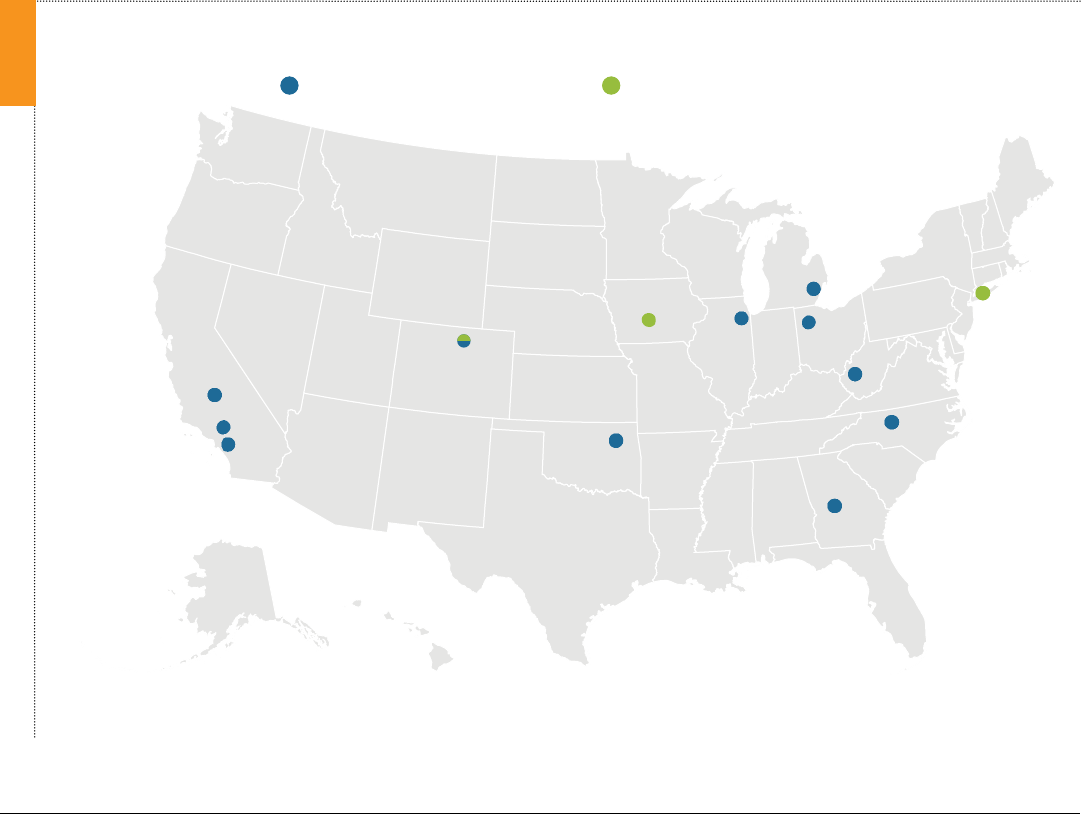
Electric School Bus U.S. Market Study and Buyer’s Guide: A Resource for School Bus Operators Pursuing Fleet Electrification
ISSUE BRIEF | June 2022 | 9
response to the favorable market outlook due to the
federal government’s Infrastructure Investment and Jobs
Act, GreenPower announced it would double its ESB
production capacity in 2021; the manufacturer said it
would lease or purchase a manufacturing facility in West
Virginia (GreenPower 2021; Justice 2022). Providers
are also forging partnerships: Lightning eMotors, an
all-electric powertrain manufacturer, and Collins Bus,
a school bus body uptter, have partnered to deliver
more than 100 electric Type A buses by 2023 (Lightning
eMotors 2021).
School bus manufacturing is concentrated in the United
States, supported by federal Buy America regulations,
and in Canada. However, ESBs are still dependent on a
global supply of lithium-ion batteries, electric motors,
and other electric vehicle components that have less
domestic manufacturing capacity (FTA n.d.). The cost
of these components, particularly batteries, will directly
impact ESB capital cost and the industry’s ability to see
rapid ESB adoption. Despite these challenges, even as
the COVID-19 pandemic has presented unprecedented
hardships for the education sector, ESBs have persisted
as the only fuel type to see growth in new bus sales during
the pandemic with sales increasing 61 percent (STN
2021b). As ESBs continue to gain market share, it will
be crucial to also manage diesel bus scrappage in a way
that limits used vehicle ows to international markets,
permits repowering by not cutting frame rails, and allows
eet managers to hold on to buses long enough to become
acclimated to ESB replacements in their eets.
To meet demand, existing contractors and emerging
third-party services are looking for ways to support
school districts in this transition. Contractors, who
represent around 40 percent of the school bus market,
MAP OF ELECTRIC SCHOOL BUS MANUFACTURING FACILITIES IN THE UNITED STATES
Notes: This map does not include electric school bus manufacturing facilities in Canada. Lion Electric and Micro Bird both have facilities in Quebec.
Source: WRI authors based on publicly available information.
FIGURE
GreenPower
BYD
Phoenix Motocars
Lightning eMotors
IC Bus/Navistar
SEA Electric
Lion
Electric*
Motiv Power
Systems
Endera
GreenPower*
Thomas Built Buses
Blue Bird
Unique Electric Solutions
Newly Manuafactured Vehicle Companies Repower Companies*Facility to be constructed

10 |
are beginning to explore pathways to electrication
to meet customer demand (Gissendaner 2021). For
example, Student Transportation of America, a private
eet operator servicing school districts across the United
States and Canada, launched an Electric School Bus Pilot
Program in 2021, and Midwest Transit Equipment is
partnering with SEA Electric to repower 10,000 school
buses to electric through 2026 (SBF 2021b; SEA Electric
2021). New service providers are employing alternative
business models to lower the upfront cost barrier and
reduce new technology risks for school districts (Box 4).
TURNKEY ASSET MANAGEMENT AND
OTHER ASASERVICE MODELS
Structured as service contracts, districts can benefit from
expert project management, procurement support, and
ongoing operations and maintenance services. Services can
span from bus ownership to site energy management, with
dierent combinations of service solutions depending on the
specific needs and context of each customer.
Two examples are Highland Electric and Levo Mobility,
firms that leverage private finance, potential vehicle-to-
grid revenues, public funds, and the purchasing power of
multiple clients to provide bundled packages of services that
enable electrification. Montgomery County Public Schools
in Maryland is partnering with Highland Electric on the
largest procurement of ESBs in North America. The school
district announced in 2021 it would convert 326 buses to
electric by 2025 on a path to full electrification of its 1,400-
bus fleet.
a
Building on this progress, Highland signed a letter
of intent with school bus manufacturer Thomas Built Buses
in March 2022, which will allow Highland to provide ESB
subscriptions through 2025 at prices that put them at cost
parity with diesel.
b
In Illinois, Levo Mobility will use its turnkey
electrification solution to help Troy Community Consolidated
School District 30-C convert its 64-school bus fleet to zero
emission within five years.
c
Notes:
a.
Proterra 2021;
b.
DTNA 2022;
c.
Levo Mobility LLC 2022.
BOX
2. ELECTRIC SCHOOL BUS BASICS
In preparing for ESB adoption, project developers need to
understand considerations for both the buses themselves
as well as the charging infrastructure to power them. This
section outlines components of the ESB and its charging
infrastructure (Tables A1 and A2 in Appendix A provide
additional terms and units, respectively) and oers
considerations for implementation.
2.1 Electric School Bus
As school districts embrace electric buses, eet managers,
bus drivers, and maintenance technicians will need to
familiarize themselves with elements that vary between
diesel and electric (Figures 5 and 6). While many
elements of the body and inside the cabin remain similar,
two key dierences are present in electric models:
1. The presence of high-voltage electrical systems
2. The absence of internal combustion–
related components
ESBs contain high-voltage systems powered by a large
lithium-ion battery pack mounted to the chassis. Power
from the high-voltage battery is distributed to the electric
motor and other systems using high-voltage cables
(colored bright orange), direct current/alternating current
(DC/AC or AC/DC) inverters, and AC/AC transformers.
The high-voltage battery pack is supported by a thermal
management system that maintains battery health and
longevity by keeping the batteries within an optimal
temperature range regardless of external temperature
(vital to ESBs operating in cold and hot climates).
With the inclusion of an electric powertrain, ESBs do
not contain internal combustion engine components and
systems (see components highlighted in red in Figure 6).
Electric buses utilize motors comprising only around 20
parts (compared with 2,000 in a diesel engine); require
fewer uid changes (including elimination of engine oil);
and commonly use a direct drive system, eliminating the
need for a transmission.
With respect to vehicle servicing, technicians have fewer
parts to maintain for electric buses when compared with
their diesel counterparts. Moreover, many auxiliary
systems in ESBs, such as braking and steering, remain
similar to those of diesel buses, making them relatively
easy to keep up and service (see components highlighted
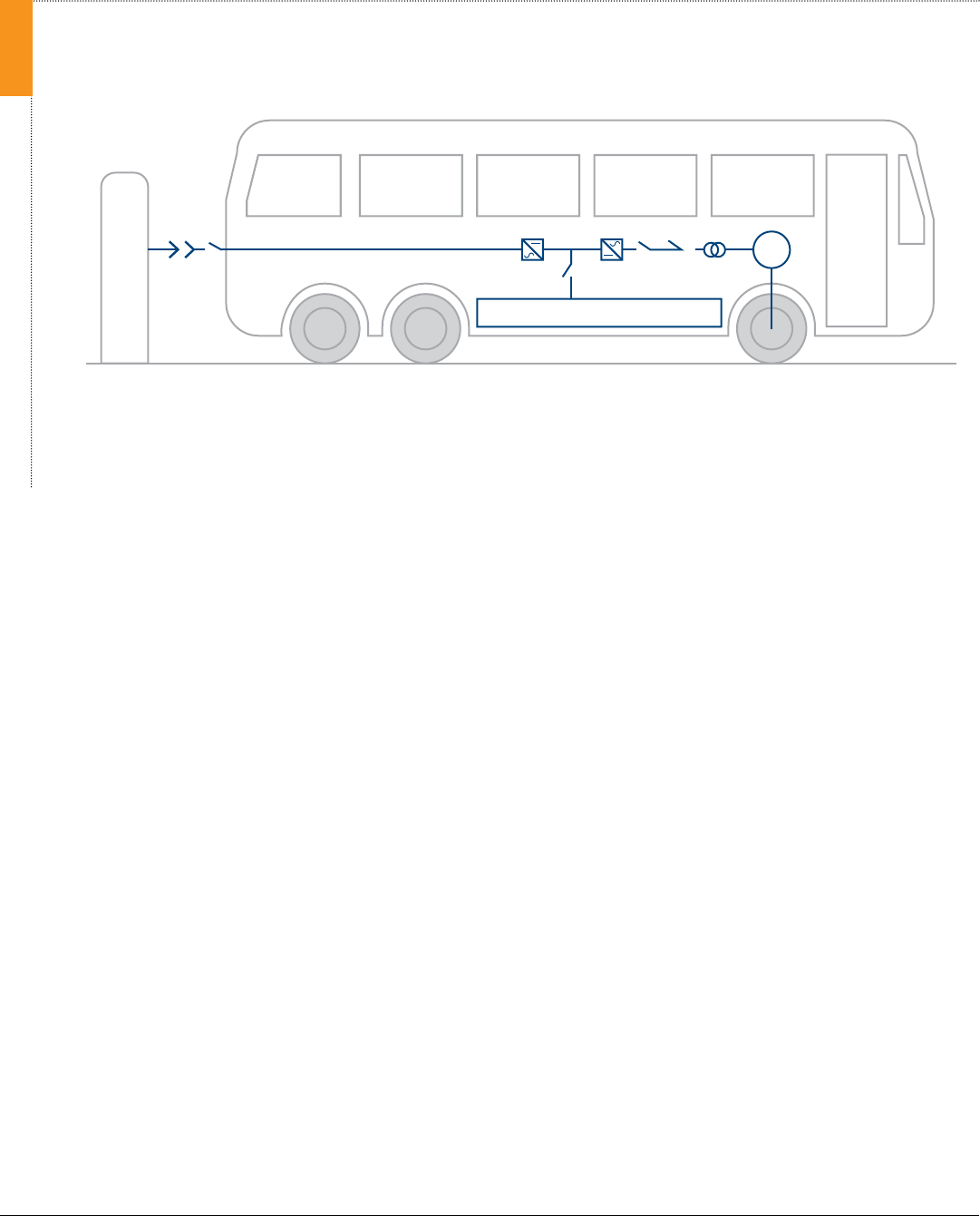
Electric School Bus U.S. Market Study and Buyer’s Guide: A Resource for School Bus Operators Pursuing Fleet Electrification
ISSUE BRIEF | June 2022 | 11
ELECTRIC SCHOOL BUS DIAGRAM
Note: Abbreviations: AC = alternating current; DC = direct current; M = motor.
Source: Ainsalu et al. 2018.
FIGURE
DC/ACAC/ACAC/DC
Battery Pack
Recharge Station
Plug-in recharge
Onboard AC line
in blue in Figure 6). Additionally, like diesel buses, ESBs
also have low-voltage auxiliary systems that use a lead-
acid battery to support components like the dashboard,
lights, and windshield wipers. However, to operate on
high-voltage systems, maintenance technicians do need
specialized training. For on-site depot maintenance
sta, completing this training can be both costly and
time consuming.
If qualied technicians are not readily available where
the bus operates, any issues that arise with the high-
voltage system must be resolved by the closest dealer
or manufacturer that has trained staff. Depending on the
proximity of the bus to these services, there can be delays
and challenges with bus uptime. To address this, it is
imperative that manufacturers and dealers work closely
with transportation managers, technicians, and their teams
to provide training to properly manage these systems and
related safety considerations and to decentralize where
the ability and knowledge to operate on high-voltage
systems is concentrated.
2.2 Charging Infrastructure
As school districts consider procuring ESBs, they must
also think about the corresponding infrastructure needed
to charge these buses. Infrastructure can be broken down
into hardware and software components. For charging
hardware or electric vehicle supply equipment, there are
three levels available today (Table 1).
Bus depots can and often do have a mix of level 2 (L2)
chargers and direct current fast chargers (DCFCs). With
lower power demand, several buses can typically charge
at the same time with multiple L2 chargers that can have
two ports per charger. For DCFCs, higher power demands
may restrict charging to fewer buses and only one
per DCFC charger.
Early and frequent engagement with a school district’s
electric utility is crucial. This is necessary to evaluate
the existing power supply and identify required system
upgrades and charging congurations to support eet
turnover. Once charging infrastructure is in place, which
can take approximately 12 to 24 months, bus operators
can take advantage of time-of-use rates (if available) and
managed smart charging to help realize greater energy
savings. For example, a 2015–18 ESB pilot at three
Massachusetts school districts found that unmanaged bus
charging and high parasitic loads during charging (e.g.,
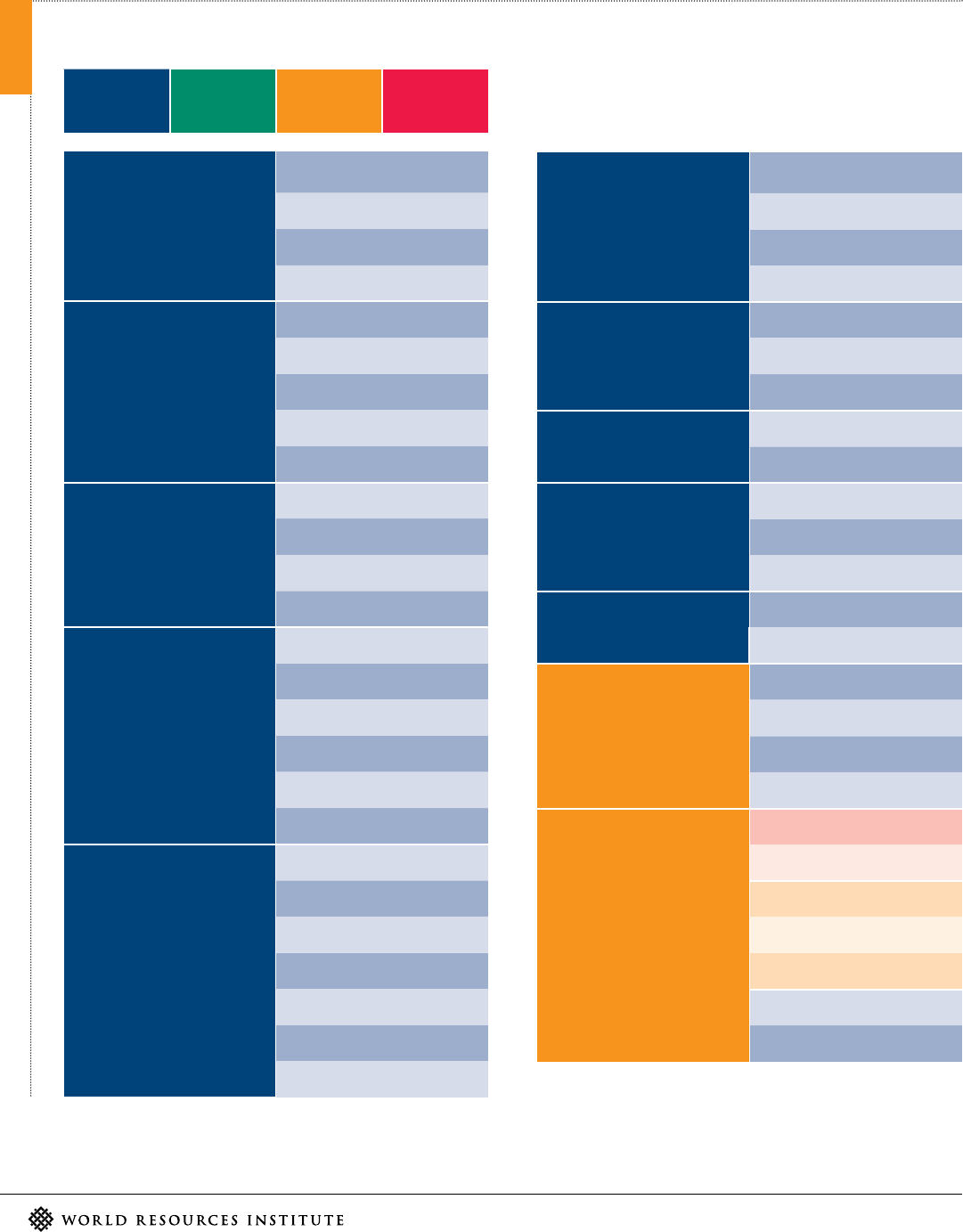
12 |
COMPARISON OF ELECTRIC AND INTERNAL COMBUSTION ENGINE VEHICLE COMPONENTS
COMMON EV ONLY
CHANGED
FOR EV
ICE ONLY
Body System
Body
Doors
Windows
Head/all lights
Suspension System
Springs
Shocks
Air leveling
Front axle
Control arms
Brake System
Brake calipers
Air compressor
Reservoir
Brake pedal
Steering System
Steering wheel
Gearbox
Power steering pump
Steering arm
Tie rod
Hydraulic system
Climate Control System
HVAC compressor
Blower
Ducts
Vents
Heat pump
Burner/heater
Controls
Gauge & Warning System
Instrument cluster
System monitor sensor
Display/HMI
Alert buzzer
Communications System
Transponder
PA system
Tracking
Lighting System
Control panel
Lights (interior, overhead)
Interior System
Seats
Flooring
Luggage storage
Public Interface
Display signage
Advertising
Chassis System
Frame
Body mounts
Engine mounts
Suspension mounts
Driveline System
Transmission
Driveshaft
Shifter
Rear axle(s)
Dierentials
Wheels
Tires
FIGURE
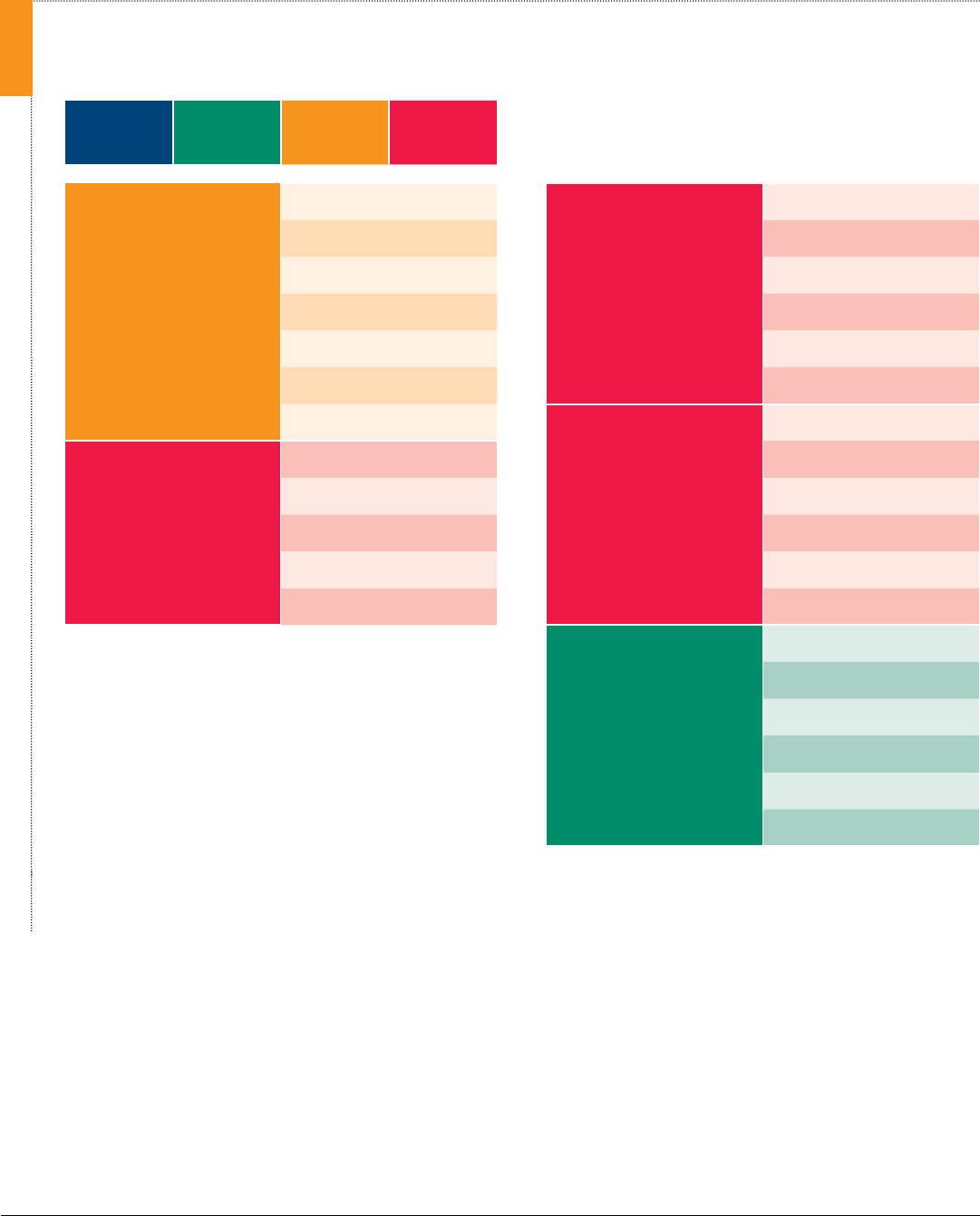
Electric School Bus U.S. Market Study and Buyer’s Guide: A Resource for School Bus Operators Pursuing Fleet Electrification
ISSUE BRIEF | June 2022 | 13
COMMON EV ONLY
CHANGED
FOR EV
ICE ONLY
Electrical/Power
Supply System
Battery
Generator/alternator
Inverter
Wiring
Voltage/current monitors
Distribution module
Outlets/connections
Engine System
Engine
Radiator
Turbocharger
Oil filter
Coolant hoses
Exhaust System
SCR catalyst
DEF tank
DPF canister
Muler
Exhaust pipes
Exhaust brake
Fuel System
Tank
Pump
Hoses
Filter
Separator
Injector
Power Unit
Motors
Drive reduction
E-axle
Battery
Inverter
Charger
Note: Abbreviations: ICE = internal combustion engine; EV = electric vehicle; HVAC = heating, ventilation, and air conditioning; HMI = human-machine interface; PA = public address;
SCR = selective catalytic reduction; DEF = diesel exhaust fluid; DPF = diesel particulate filter.
Source: Nair et al. 2022.
COMPARISON OF ELECTRIC AND INTERNAL COMBUSTION ENGINE VEHICLE COMPONENTS
CONT.
FIGURE
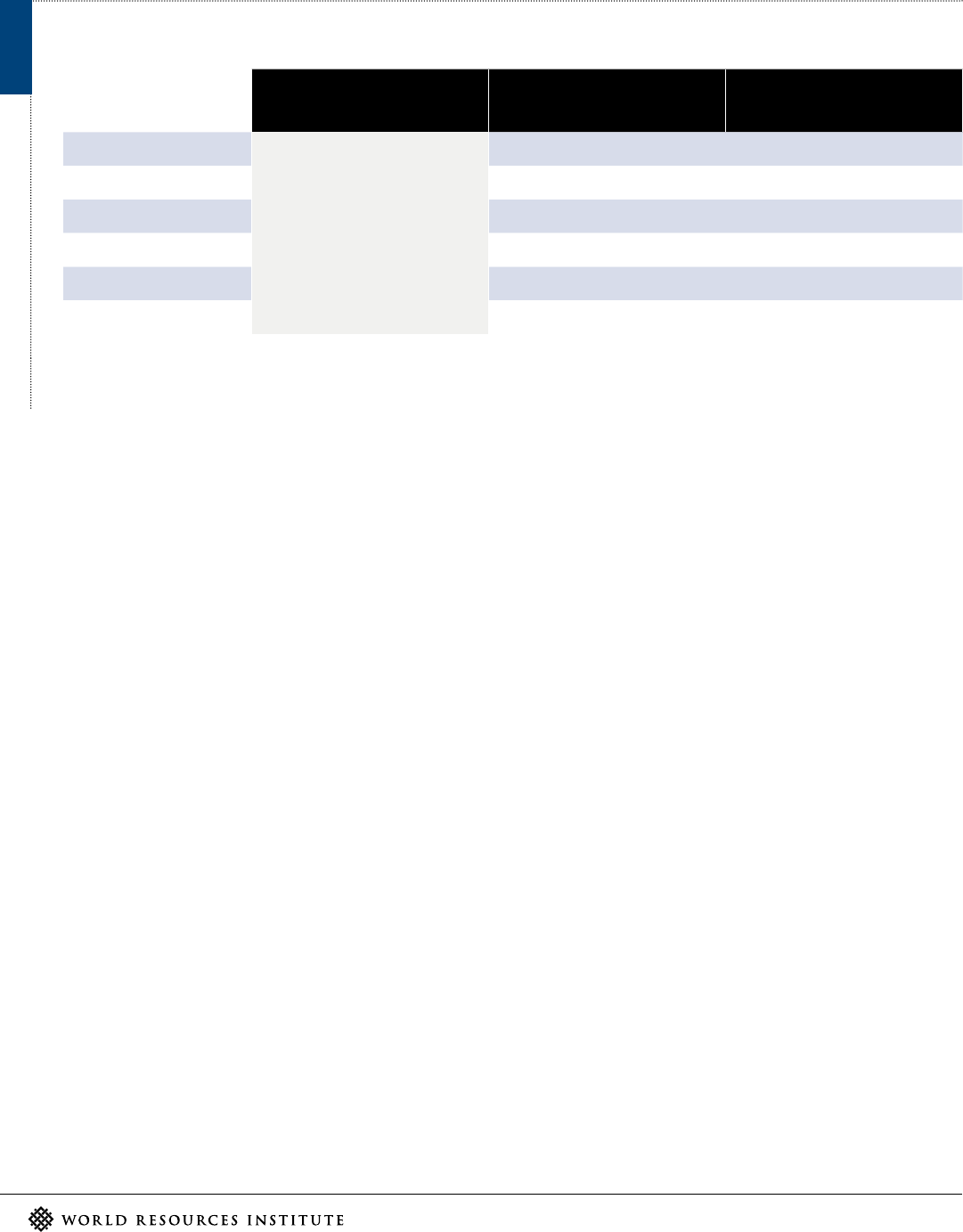
14 |
CHARGING LEVELS
Level 1 (L1) Level 2 (L2) Single Port
a
Direct Current Fast Charger
(DCFC) Single Port
Type of current
Typically for residential, personal
vehicle charging; not suitable for
ESBs due to low rate of charge
relative to the time it takes to
charge a battery
Alternating Current Direct Current
Voltage (V) 208/240 200–600
Power level (kW) ~7–20 ~24–150
ESB recharge time 5.5–13 hours
b
1–4.5 hours
b
Charger equipment cost
c
$400–$6,500
d
$10,000–$40,000
d
Installation cost
e
$600–$12,700
d
$4,000–$51,000
d
Notes: Abbreviations: V = volt; kW = kilowatt; ESB = electric school bus;
a.
Potential for dual port oering;
b.
See Tables 2, 3, and 4;
c.
Costs are largely dependent on the power output
(kilowatts) of the charger, the degree of control over charging, and other advanced features;
d.
Smith and Castellano 2015; ITSJPO 2019;
e.
Installation costs will be site and geography
dependent. Estimates do not include potential grid upgrade costs.
TABLE
bus heaters, fans, lights) contributed to ESB electricity
costs being 63 percent higher than necessary (VEIC
2018). To avoid the excess energy consumption, the
report authors recommended utilizing managed charging.
Beyond the hardware, managed charging uses software
designed to help eet operators optimize charging
schedules, costs, and bus performance. This software,
often provided by charging software developers, can
allow for scheduling charging times for when electricity
prices are lowest or for turning o charging to preserve
battery life without manual adjustments, even if the bus
is plugged in continuously (Box 5). Chargers equipped
with this software will likely be somewhat more expensive
upfront and incur ongoing subscription or service fees.
Managed charging software can be customized for a eet,
and operators can leverage tools through mobile apps or
online platforms.
to-grid; V2G). Since the rst vehicle-to-grid deployment
in 2014 at three California school districts, at least 15
utilities across 14 states have committed to pilot ESB V2G
programs (PCA 2014; Hutchinson and Kresge 2022).
Through V2G programs, buses also have the potential
to generate revenue by discharging energy from their
batteries back to the grid to be used elsewhere—this is a
nascent market but technological advancements should
make this widely available in the near future. While these
bidirectional concepts have been deployed by only a
handful of school districts to date, they oer potential to
increase resilience, generate revenue, and reduce costs
(Proterra 2019).
Electric bus adoption can also be paired with new or
existing on-site solar installation as an energy storage
solution (ENGIE Impact 2021; Soneji et al. 2020; Ellis
2020; Riley 2021). This approach could further decrease
energy costs while providing a power source for charging
during service disruptions. Installing on-site solar also
helps districts contribute to wider school district, city, or
state emissions reduction or sustainability goals.
With the right hardware and software, school districts
can take advantage of bidirectional charging, where
the vehicle can receive electricity to charge as well as
discharge back to a dierent load or onto the grid. If
equipped with this functionality, a bus can serve as a
backup battery for a building by providing power during
emergencies (vehicle-to-building; V2B) or for another
load (vehicle-to-another-load; V2L). Buses can also
store electricity in their batteries and later discharge it
onto the grid to reduce districts’ utility costs (vehicle-
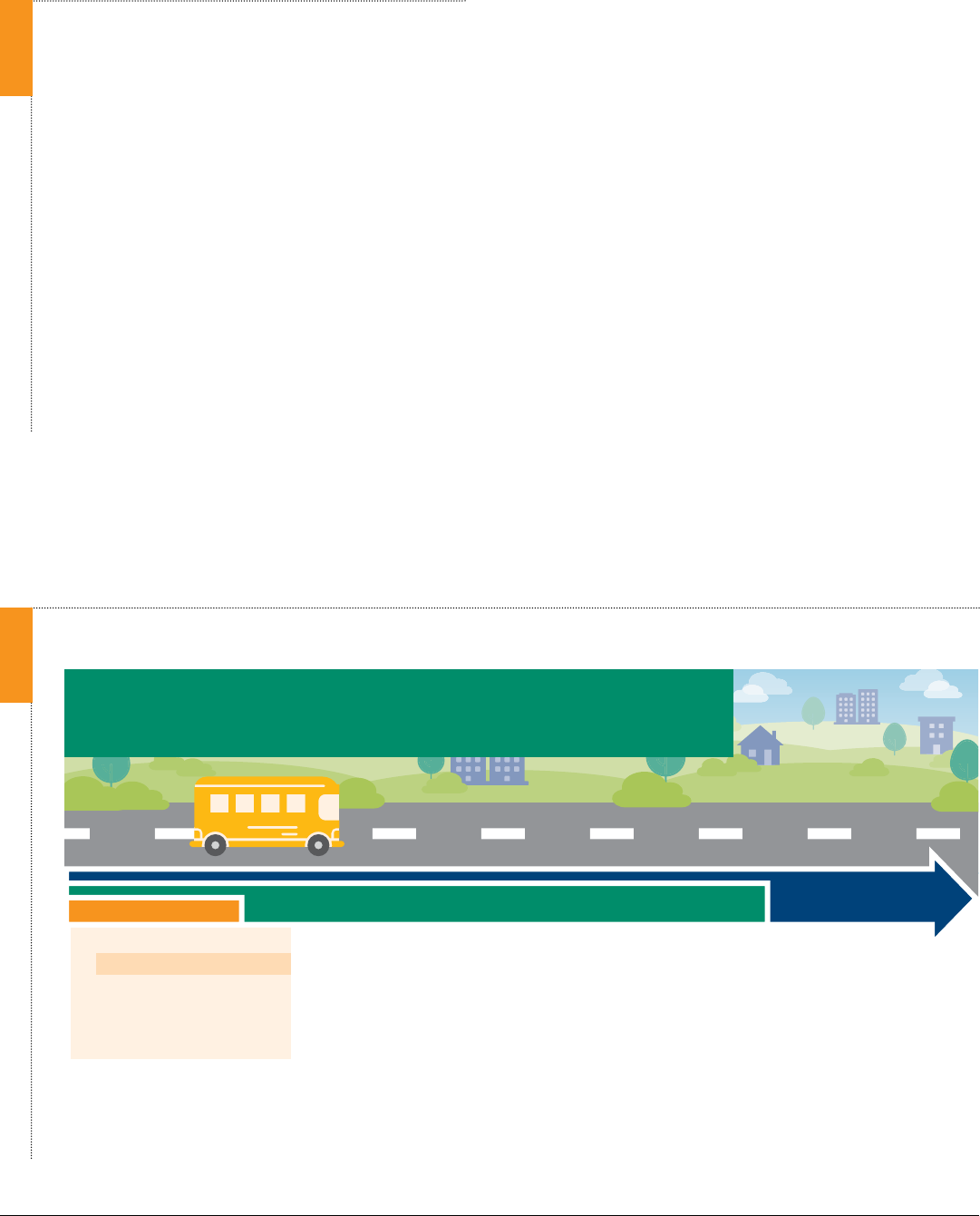
Electric School Bus U.S. Market Study and Buyer’s Guide: A Resource for School Bus Operators Pursuing Fleet Electrification
ISSUE BRIEF | June 2022 | 15
ENERGYASASERVICE SOLUTIONS
Just as transportation-as-a-service oerings on the bus
side have emerged,as-a-service oerings that handle the
intersecting charging elements have also proliferated.As-
a-service arrangements can help school districts reduce
charging costs, finance necessary infrastructure upgrades,
and manage their energy needs within the grid capacity of
their depots. The robust market extends much beyond services
exclusive to the school bus industry, ranging from fleet energy
management firms like eIQ Mobility and Olivine to charging-
and infrastructure-as-a-service firms like The Mobility House,
Amply, and NextEra Energy’s Mobility Team.Other entrants
in this space include electric utilities and energy services
companies, which are experimenting with energy performance
contract oerings.This topic requires more detail than covered
in this report and is a dynamic space. More information can be
found in Cleary and Palmer (2020).
BOX
2.3 Considerations for Implementation
School districts that choose to adopt ESBs without
contractors or transportation-as-a-service providers
generally follow a similar roadmap to adopting ESBs,
laid out in Figure 7. Many of these stages overlap and are
executed concurrently.
While this publication predominantly focuses on
information that can support school districts in the
foundation-setting stage (Stage 1.1 in Figure 7), some
potential considerations and guiding questions for all ve
stages are listed below. This list is not exhaustive and will
be explored in more detail in future publications.
Stage 1. Foundation Setting
▪
What are your ultimate electrication goals?
▪
How are local community-based organizations,
students, parents, and other stakeholders being
brought into the process?
▪
Would a school district benet from leveraging an
“as-a-service” model (Boxes 4 and 5)?
FIVE STAGES AND CORRESPONDING STEPS OF ELECTRIC SCHOOL BUS ADOPTION
Sources: WRI authors, based on technical assistance from the Electric School Bus Initiative.
FIGURE
Electric School Bus Roadmap
Transitioning to electric school buses generally follows a standardized process and can take around two years of planning.
Your timeline may be dierent and will depend on local capacity, financing and processes, and the availability of buses.
TO MONTHS
1. Foundation Setting
1.1 Visioning and market study
1.2 Community and stakeholder
engagement
1.3 Funding and financing research
1.4 Roadmap creation
4. Testing and Training
4.1 Fleet and equipment testing
4.2 Driver and mechanic training
5. Deployment and Scaling
5.1 Fleet deployment
5.2 Monitoring, tracking, and reporting
5.3 Community outreach and sharing
of lessons learned
5.4 Scaling strategy
TO MONTHS
2. Planning and Procurement
2.1 Facility and site assessment
2.2 Operations, fleet, and infrastructure plans
2.3 Procurement evaluation and requests for
information/requests for proposals
3. Charging Infrastructure
3.1 Utility coordination for rates and
interconnection requirements
3.2 Bus depot upgrades and solar pairing
3.3 Charger installation and evaluation
ONGOING

16 |
▪
What types of funding are available (e.g., voucher,
rebate, grant) to reduce the upfront price (Box 6)?
Can incentives be stacked?
▪
How can electrication help increase access to school
and after-school activities?
▪
What are your plans for retiring old
diesel school buses?
▪
Who will be responsible for recycling bus batteries?
▪
Are you considering newly manufactured or
repowered ESBs, or both?
THE REAL COST OF ELECTRIC SCHOOL
BUSES IS LOWER THAN YOU THINK
While the upfront price of ESBs is substantial, experts
anticipate significant price declines over the next decade
as battery costs decrease and the electric vehicle industry
achieves eiciencies of scale in component markets and
manufacturing. In fact, the real lifetime cost of ESBs can
be much closer to that of their diesel counterparts due to
significant savings on operational expenditures—such as
fueling and maintenance—that build up over the years a
vehicle is in use. These savings can range from an estimated
$4,000 to $11,000 per school bus every year (depending
on labor costs, local electric utility rates, and the price of
petroleum fuels).
a
Market experts predict that the lifetime
costs of ESBs will be around the same as diesel buses for new
purchases starting between 2025 and 2030.
b
This total cost
parity will be driven mainly by continuation of the precipitous
decline in battery prices over the past decade and further
development of new battery chemistries.
c
Notes:
a.
Levinson 2022.;
b.
Smith 2019; Watson et al. 2020.;
c.
BloombergNEF 2021.
BOX
Stage 2. Planning and Procurement
▪
Which models meet local restrictions and
requirements (e.g., street width restrictions, heating
and air conditioning requirements)?
▪
Which models meet your range needs?
▪
Which models best serve students with disabilities?
▪
Are there other features, such as Wi-Fi, that could
benet students and communities?
Stage 3. Charging Infrastructure
▪
Questions for utilities:
□ Are you currently subject to “demand charges?”
□ Does your electric utility have an electric vehicle–
specic time-of-use (TOU) rate?
□ Have you considered ongoing operations and
maintenance of the charger and associated
equipment through a service-level agreement
with the charger network provider?
□ Does your electric utility oer bidirectional
charging programs?
▪
What stakeholders will be important to engage
beyond utilities (e.g., landlords if facility is
leased, city agencies if building or electrical
permits are required)?
▪
How might driver behavioral patterns, like park
outs (drivers taking buses home at night), aect
charging planning?
▪
How will charging infrastructure impact your school
and surrounding community? Can charging be paired
with renewables? Can infrastructure be installed
near drivers’ homes in rural areas?
▪
Do you plan to use your buses as part of disaster
response strategies?
Stage 4. Testing and Training
▪
How are employees being trained to work with this
infrastructure (Box 7)? Who has access to training
programs and new jobs?
Stage 5. Deployment and Scaling
▪
How is route electrication executed? Can
routes that serve disadvantaged riders or drive
through underserved communities be prioritized
when electrifying?
▪
How can eet electrication positively impact other
energy- or sustainability-related goals?
▪
Can regional collaboration and support networks
be formed among schools converting their eets to
electric to support eld trips or sporting events (e.g.,
creating mutual aid networks for charging based on
existing or new partnerships; see Box 3)?

Electric School Bus U.S. Market Study and Buyer’s Guide: A Resource for School Bus Operators Pursuing Fleet Electrification
ISSUE BRIEF | June 2022 | 17
LESSONS LEARNED ON THE ROAD TO ELECTRIFICATION IN CARMEL CLAY, INDIANA
Carmel Clay Schools received Indiana’s first ESB in the summer of 2020. The school district is keen on finding new technologies to improve air
quality and reduce emissions and has pursued alternative-fuel school buses for several years. After being awarded Volkswagen settlement
funding, the school district paid the equivalent price of a diesel bus for a first-generation Type D electric bus.
In its year and a half of electric school bus operations, Carmel Clay has learned from several challenges, mostly operational issues aecting
range and reliability. For example, in winter months, the bus’s 12-volt onboard electric heater drained the battery faster than anticipated and it
was a struggle to maintain temperatures above 40°F inside the cabin. To resolve the issue, the manufacturer performed several modifications,
including rewiring the bus so the onboard battery did not draw as much power, but this adjustment did not fully resolve the issue.
Despite some challenges, Gary Clevenger, the assistant director of transportation and facilities for the school district, remains optimistic about
the potential of ESBs. He believes that the predictability of school bus routes makes them particularly conducive to electrification if reliability
issues can be addressed. However, he would like to see additional eorts to improve not just the technology itself but also the training provided
to maintenance technicians, as much of the down time resulted from waiting for technicians trained to work with high-voltage equipment.
Source: Clevenger and Decker 2022.
BOX
3. SUMMARY OF AVAILABLE
ELECTRIC BUS MODELS
As of January 2022, there were 22 models of ESBs
available for purchase in the United States, and
established manufacturers were expanding their oerings
based on the potential growth of the ESB market.
Electric models are available for Types A, C, and D
school buses.
6
Among the available electric models, the
Type C oerings are the most mature, or commercially
ready. Manufacturers gauge commercial maturity as they
move from pre-production assembly to full production,
a process that achieves modest volumes and means
a vehicle model is available for retail sale. Moreover,
electric bus models that enter commercial production will
have undergone multiple testing iterations prior to factory
line assembly and are more mature as a later-generation
product. Finally, a test of maturity can be applied to a
supportive supply chain where manufacturers and their
dealers establish formal maintenance networks to service
ESBs after delivery. In today’s market there are a mixture
of early-stage ESB models that have not yet been deployed
and mature models that are sold like conventional
school bus models.
3.1 Newly Manufactured Electric School Buses
A newly manufactured bus is one that has been designed
and built to operate with an electric powertrain from the
ground up, with one exception being some electric Type
A cutaway buses (see Type A). Although the purchase
price of newly manufactured buses is currently around
three to four times that of diesel buses—as batteries are
more expensive than internal combustion engines and
the market has yet to achieve economies of scale—the
costs associated with operations and maintenance are
substantially lower. According to one analysis, fueling
and maintaining electric models could be less than half
the cost of diesel over an expected lifetime of 12 years
(Tables 2, 3 and 4; EDF 2021). When considering models,
school districts should keep in mind the dierence
between a newly manufactured ESB and a repowered bus
(see Section 3.2).
Type A
Type A buses are small, typically accommodating fewer
than 36 passengers. There can be multiple entities
involved in the construction of a Type A bus with dierent
manufacturers responsible for dierent elements (e.g.,
the chassis, the powertrain, the body). Available electric
models are presented in Table 2.
Type A buses are constructed using three
distinct approaches:
▪
New repower cutaway: The diesel or gasoline
powertrain is removed from a new internal
combustion engine cutaway (usually produced by
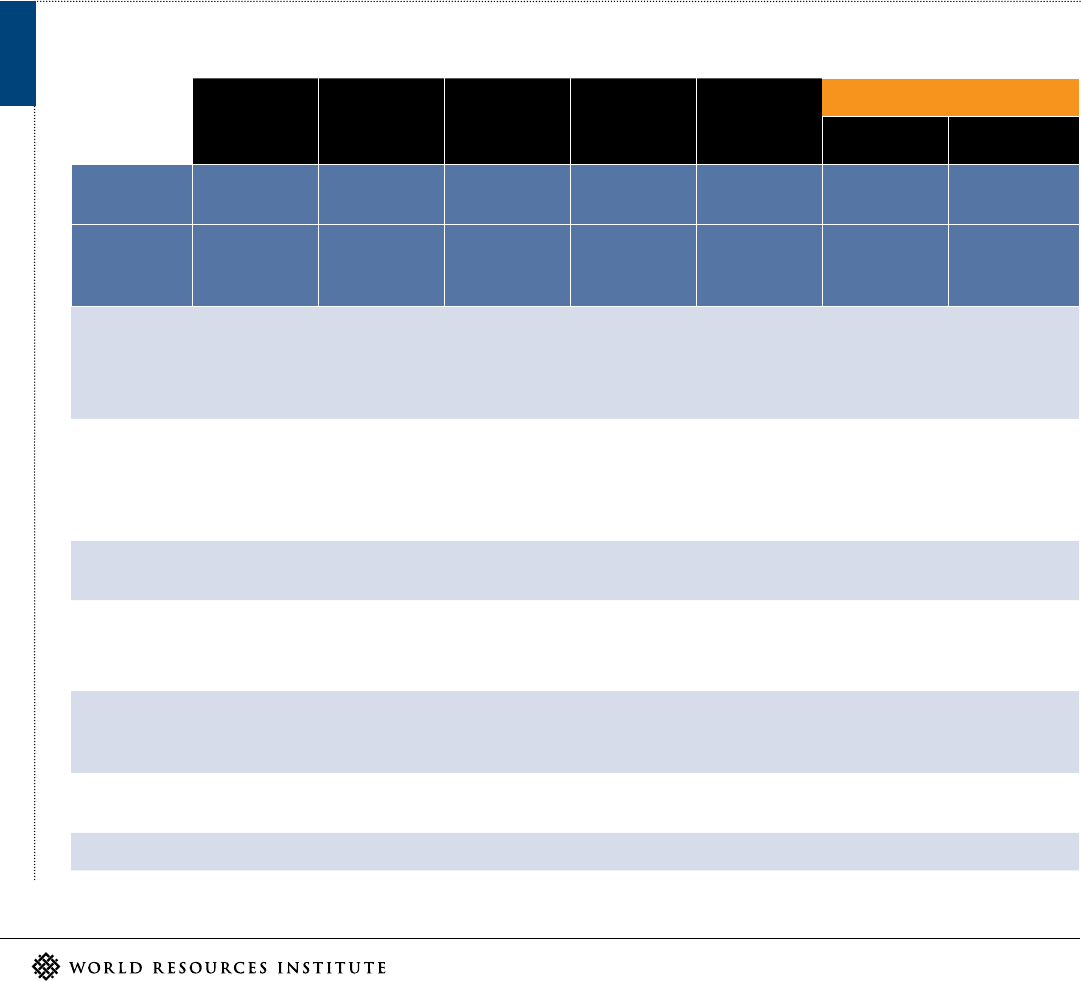
18 |
Ford or General Motors) and replaced with an electric
powertrain. A school bus body is attached to the new
repowered cutaway.
▪
E-cutaway: The school bus body is attached to a new
purpose-built, electric cutaway.
▪
Non-cutaway: The bus chassis, powertrain, and body
are all assembled as a single integrated unit. The
bus is not built on a cutaway platform. This model is
comparable to Type C and D manufacturing.
AVAILABLE NEWLY MANUFACTURED ELECTRIC SCHOOL BUSES TYPE A
Lightning
eMotors
a
Lion
Electric
Micro Bird Motiv
b
Phoenix
Motorcars
c
COMING SOON
Endera GreenPower
MODEL
ELECTRIC
E
LIONA
MICRO
BIRD G
EPIC E ZEUS OSERIES NANO BEAST
BUILD TYPE
NEW
REPOWER
CUTAWAY
NON
CUTAWAY
NEW
REPOWER
CUTAWAY
NEW
REPOWER
CUTAWAY
NEW
REPOWER
CUTAWAY
NEW
REPOWER
CUTAWAY
ECUTAWAY
Price range
d
Not available $340,162–
$343,162
e
$236,390–
$251,425
f
Collins Bus:
$300,784
Trans Tech:
$322,015
g
Not available TBD TBD
Length (L)/
width (W)/
height (H)
h
L: 290”
W: 96”
Height not
available
L: 313”
W: 96”
H: 111”
L: 283”
W: 96”
H: 113–118”
L: 288”
Width and
height not
available
L: 277”/288”
W: 96”
H: 120”
L: 288”
W: 98”
H: 108”
L: 300”
W: 91”
H: 124”
Passenger
capacity
24 24 30 24 23 24 20
Charger
connector
L2: J1772
DCFC: CCS1
L2: J1772
DCFC: CCS1
L2: J1772
DCFC: CCS1
L2: J1772
DCFC: CC1S
L2: J1772
DCFC: CCS1 or
CHAdeMO
DCFC: CCS1 L2: J1772
DCFC: CCS1
Capable of
bidirectional
charging
Coming 2022 Yes Yes Not available Optional Yes Yes
Battery size
(kWh)
120 84/168 88 127 94/125/156 151 118.2
Range (miles) 100 75/150 100 105 100/130/160 135 150
TABLE
Type C
Type C buses, with passenger capacities between 40 and
83 and a curved hood that increases front visibility, make
up 70 percent of the overall school bus eet (Matthews
2021). Type C oerings are the most mature for the ESB
market and are listed in Table 3.
Type D
Type D, the largest of school buses seating up to
90 students, make up approximately 20 percent of
the market (Matthews 2021). Electric oerings are
presented in Table 4.
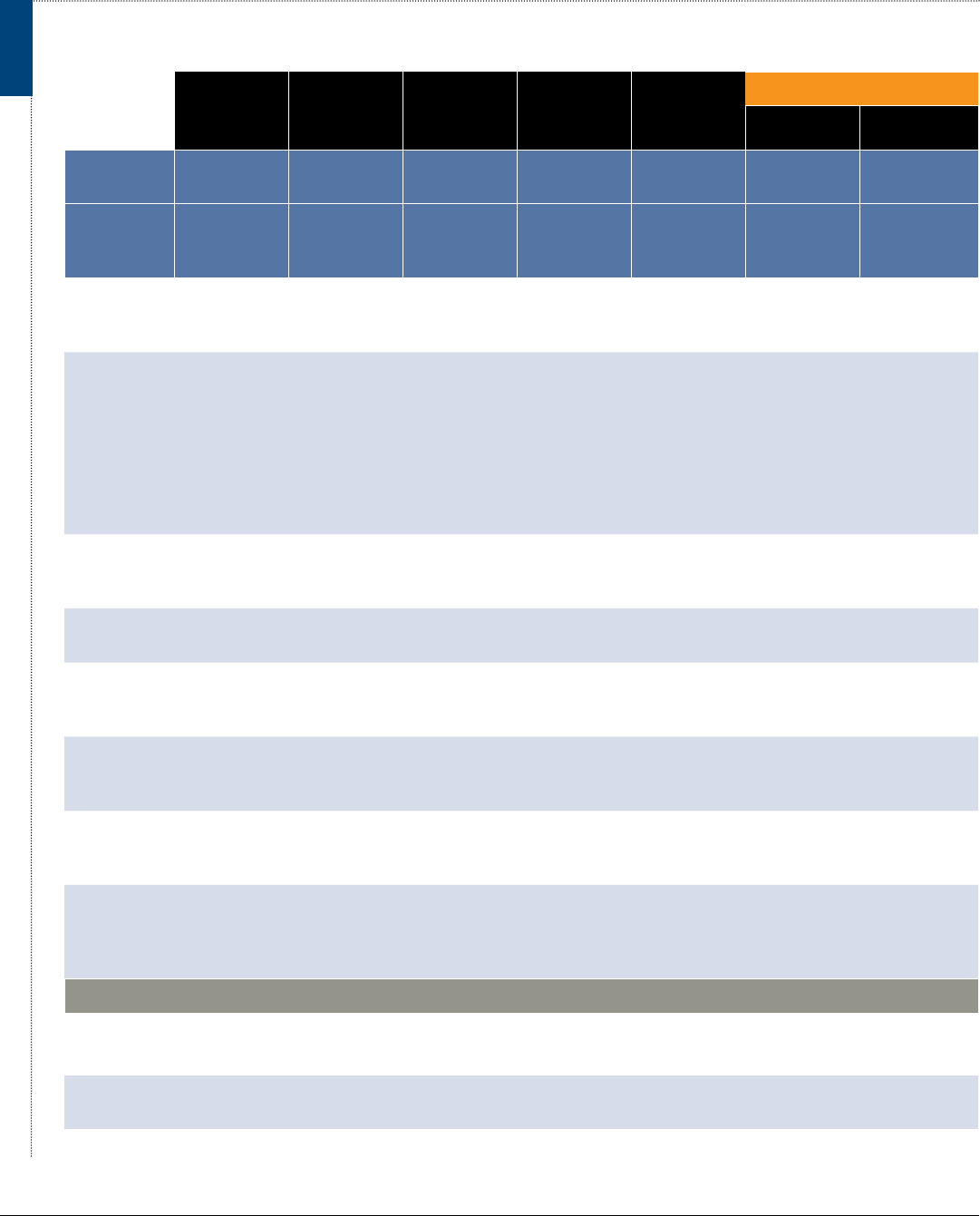
Electric School Bus U.S. Market Study and Buyer’s Guide: A Resource for School Bus Operators Pursuing Fleet Electrification
ISSUE BRIEF | June 2022 | 19
Lightning
eMotors
a
Lion
Electric
Micro Bird Motiv
b
Phoenix
Motorcars
c
COMING SOON
Endera GreenPower
MODEL
ELECTRIC
E
LIONA
MICRO
BIRD G
EPIC E ZEUS OSERIES NANO BEAST
BUILD TYPE
NEW
REPOWER
CUTAWAY
NON
CUTAWAY
NEW
REPOWER
CUTAWAY
NEW
REPOWER
CUTAWAY
NEW
REPOWER
CUTAWAY
NEW
REPOWER
CUTAWAY
ECUTAWAY
Battery
thermal
management
Dynamic liquid
cooled system
Liquid cooled Liquid cooled Not available Liquid cooled Liquid cooled PTC heating,
liquid cooled
Recharge time L2 (13.2 kW):
5.5–7.5 hours
DCFC (80
kW max): 1.5
hours–2 hours
L2 (19.2 kW):
6.5–11 hours
DCFC (24 kW):
5–9 hours
or (50 kW)
2.5–4.25 hours
L2 (19.2 kW): 7
hours
DCFC (50 kW):
2 hours
L2 (19.2 kW): 8
hours
DCFC (60 kW):
Charge time
not available
L2 (13 kW):
Depends on
battery pack
size
DCFC (50 kW):
Depends on
battery pack
size
Onboard AC
charger (6.6
kW): 7 hours
DCFC: (~50
kW) 2.5 hours
or (~125 kW) 1
hour
L2 (11 kW): 11
hours
DCFC (60 kW):
2 hours
Charge port
location
options
Front driver’s
side fender
Rear driver Front nose Not available Front driver’s
side fender
Front grille Front driver’s
side
Electric
drivetrain (Mfr.)
Cascadia
Motion
DANA TM4
SUMO-MD
EcoTuned Motiv Phoenix/TM4 Endera TM4
Transmis-
sion (direct
drive/2-speed)
None
(direct drive)
None
(direct drive)
2-speed Not available None
(direct drive)
2-speed None
(direct drive)
Brakes (air/
hydraulic)
Hydraulic Hydraulic Hydraulic Not available Hydraulic Hydraulic Hydraulic
(front—disc;
rear—drum)
Heat type
(electric/
diesel)
Electric Auxiliary diesel
or electric
Electric Not available Electric Electric Electric
Delivery time 2 months
(dependent
on chassis
availability)
7–9 months Up to 8 months Not available 6 months Expected
production
2023
6 months
(production
TBD)
WARRANTY INFORMATION
Battery 5 years/
60,000 miles
8 years 8 years/
100,000 miles
Not available 5 years/
150,000 miles
5 years/
100,000 miles
5 years/
100,000 miles
Drivetrain 5 years/
60,000 miles
5 years/
160,000 miles
5 years/
100,000 miles
Not available 5 years/
60,000 miles
5 years/
60,000 miles
3 years/
150,000 miles
AVAILABLE NEWLY MANUFACTURED ELECTRIC SCHOOL BUSES TYPE A CONT.
TABLE
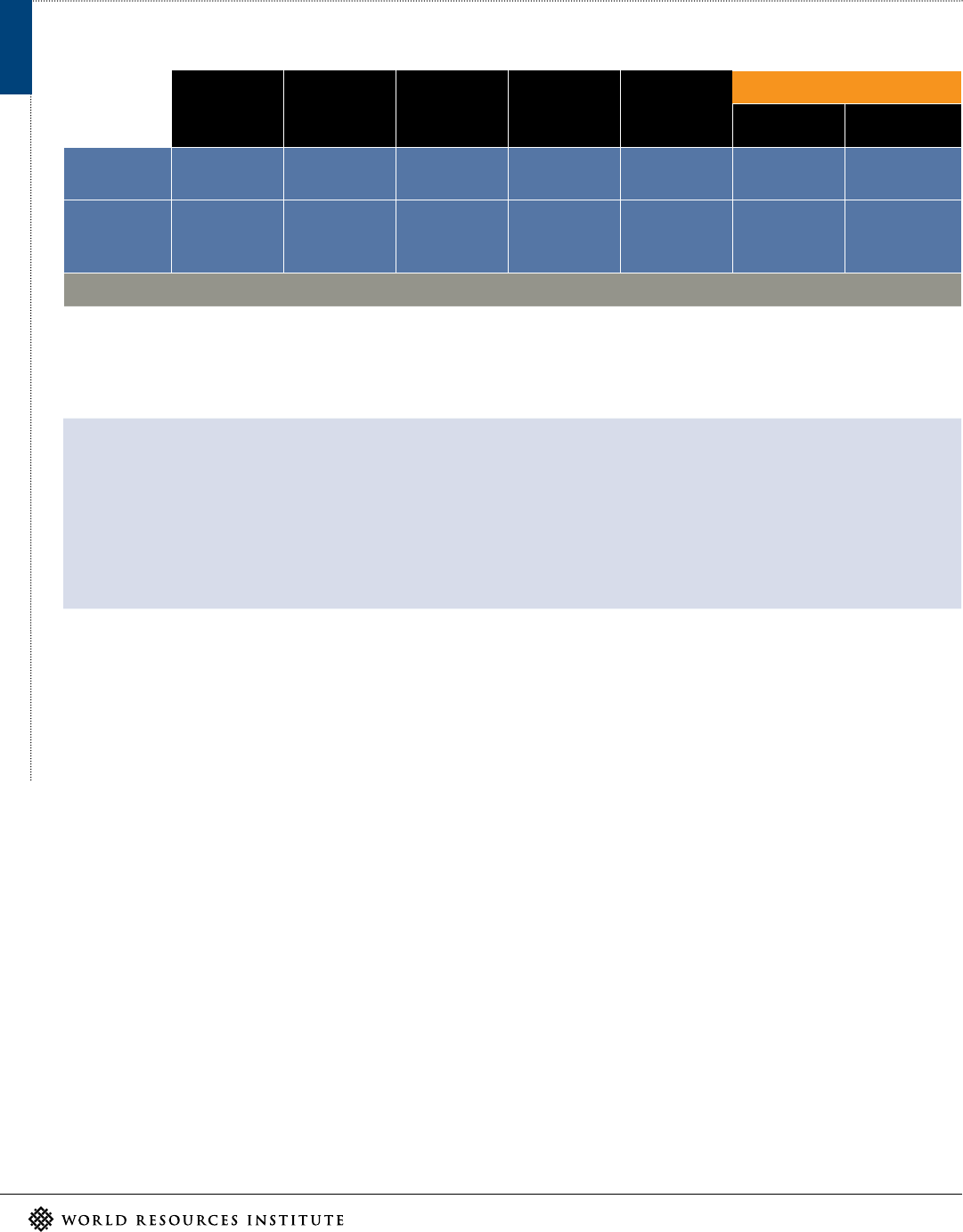
20 |
Lightning
eMotors
a
Lion
Electric
Micro Bird Motiv
b
Phoenix
Motorcars
c
COMING SOON
Endera GreenPower
MODEL
ELECTRIC
E
LIONA
MICRO
BIRD G
EPIC E ZEUS OSERIES NANO BEAST
BUILD TYPE
NEW
REPOWER
CUTAWAY
NON
CUTAWAY
NEW
REPOWER
CUTAWAY
NEW
REPOWER
CUTAWAY
NEW
REPOWER
CUTAWAY
NEW
REPOWER
CUTAWAY
ECUTAWAY
WARRANTY INFORMATION
Chassis Not available 5 years Body (1
year/12,000
miles) and
structure (5
years)
Not available 3 years/36,000
miles
3 years/36,000
miles
3 years/250,000
miles
Additional Bumper to
bumper 3
years/36,000
miles
Up to 12 years Not applicable Not available Bumper to
bumper 3
years/36,000
miles
For the
earlier of 2
years/75,000
miles, Endera
warrants that
all vehicle
components
will be free
from defects
Additional
warranties
oered for
various parts
Extended
warranties
available case
by case
Notes: Abbreviations: TBD = to be determined; kWh = kilowatt-hour; PTC = positive temperature coeicient; DCFC = direct current fast charger; AC = alternating current; L2 = level 2
charger; Mfr. = manufacturer.
a.
As of April 2022, WRI was aware of an established public relationship between Lightning eMotors and bus body manufacturer Collins Bus;
b.
As of April
2022, WRI was aware of established public relationships between Motiv Power Systems and bus body manufacturers Collins Bus and Trans Tech;
c.
As of April 2022, WRI was aware of
an established public relationship between Phoenix Motorcars and bus body builder Pegasus Bus;
d.
Based on lowest price authors found announced publicly to date. Prices are meant
to be illustrative. School districts or contractors will need to work with a local dealer for an accurate price quote. Prices vary from state to state and depend on bus specification needs;
e.
Lion: STBC 2020; DTS 2020;
f.
Micro Bird: NYOGS 2022; KDE 2022.;
g.
Motiv: NYOGS 2022;
h.
State and city requirements and needs will influence a school district’s dimension needs. For
example, some geographies have a width maximum for school buses.
Sources: WRI author collaboration with Micro Bird, Lion, Phoenix Motorcars, Lightning eMotors, Endera, and GreenPower. Other information gathered from public specifications.
AVAILABLE NEWLY MANUFACTURED ELECTRIC SCHOOL BUSES TYPE A CONT.
TABLE
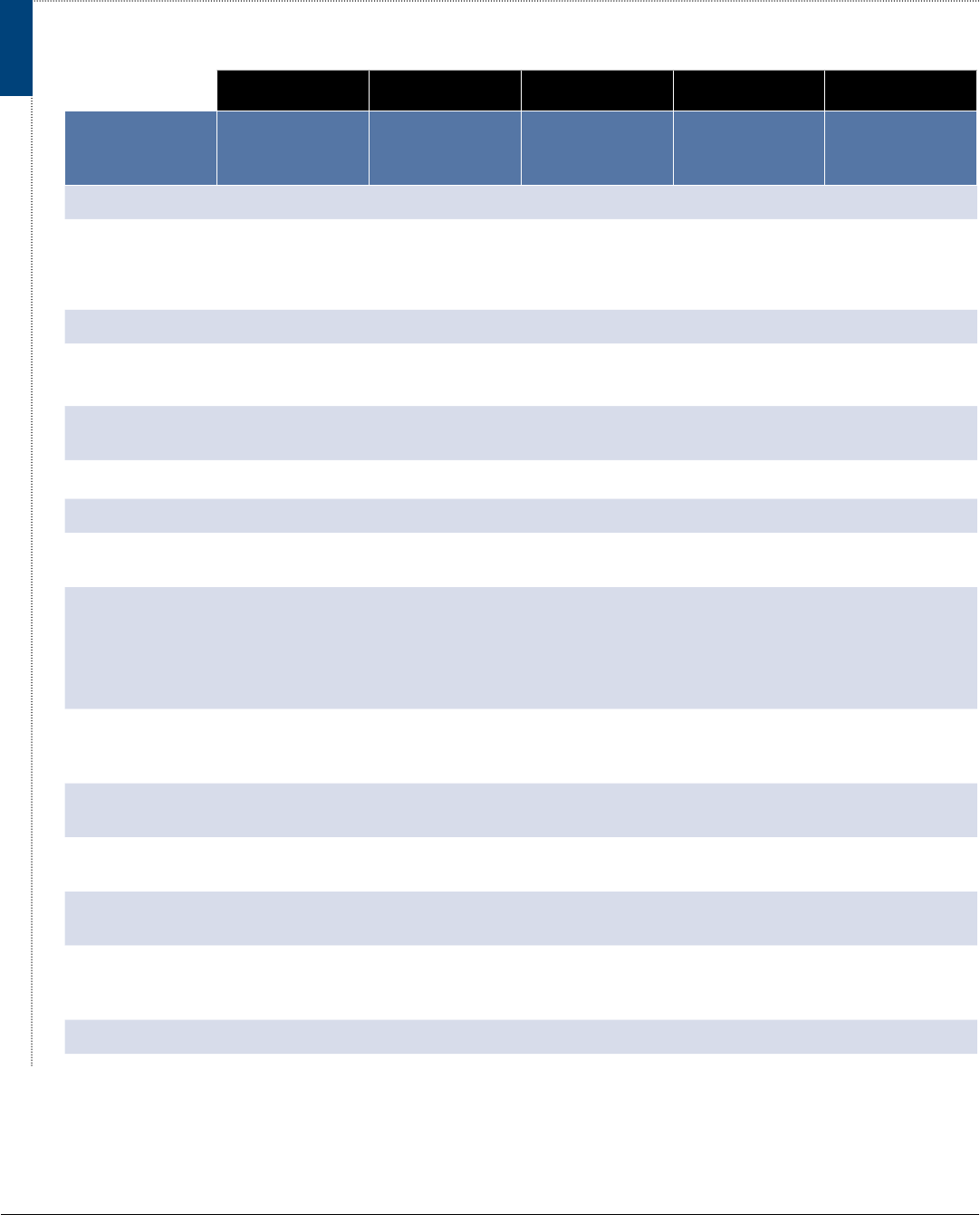
Electric School Bus U.S. Market Study and Buyer’s Guide: A Resource for School Bus Operators Pursuing Fleet Electrification
ISSUE BRIEF | June 2022 | 21
AVAILABLE NEWLY MANUFACTURED ELECTRIC SCHOOL BUSES TYPE C
Blue Bird Lion Thomas IC Bus/Navistar BYD
MODEL BLUE BIRD VISION LIONC
SAFTLINER C
JOULEY
IC CE SERIES
ELECTRIC BUS/
PBE
TYPE C
Price range $326,810–$365,000
a
$338,253–$422,302
b
$335,287–$437,000
c
$347,870–$364,123
d
Not available
Length (L)/width
(W)/height (H)
L: Max 477”
W: 96”
H: 123”
L: 473”
W: 96–102”
H: 122”
L: 396”
W: 96”
H: 144”
L: 303.9”/474.9”
W: 96”
H: 123”
L: 435”/462”
W: 102”
H: 132.9”
Passenger capacity 77 77 81 29–72 78
Charger connector L2: J1772
DCFC: CCS1
L2: J1772
DCFC: CCS1
DCFC: CCS1 L2: J1772
DCFC: CCS1
L2: J1772
DCFC: CCS1
Capable of bidirec-
tional charging
Yes Yes Optional Yes Optional
Battery size (kWh) 155 126/168 226 210/315 255.5
Range (miles) 120 100/125 138 135/210 155
Battery thermal
management
Liquid cooled Liquid cooled Set to maintain 70°F
battery temp
Set to maintain 70°F
battery temp
Water cooling
Recharge time L2 (19.2 kW): 8 hours
DCFC (60 kW): 3
hours
L2 (19.2 kW): 6.5–11
hours
DCFC: (24 kW) 5–9
hours or (50 kW)
2.5–4.25 hours
DCFC: (25 kW) 8.25
hours or (60 kW) 3.4
hours
L2 (19.2 kW): 8 hours
DCFC (60 kW): 3
hours
L2 (20 kW max):
12.5–13 hours
DCFC (150 kW): 1.5–2
hours
Charge port location
options
Rear or front
passenger side/front
passenger side
Rear passenger, front
nose, or both
Front passenger
side—optional rear
charge port curbside
Front right side—
optional rear right
side
Curbside rear
Electric
drivetrain (Mfr.)
DANA TM4 DANA TM4 SUMO-MD Proterra DANA TM4 SUMO-MD BYD
Transmission (direct
drive/2-speed)
None
(direct drive)
None
(direct drive)
2-speed None
(direct drive)
None
(direct drive)
Brakes (air/hydraulic) Air disc or drum
(hydraulic in 2022)
Hydraulic
(air available)
Air Air disc Front/rear air
disc, ABS
Heat type (electric/
diesel)
Electric (diesel
supplemental heat
option)
Auxiliary diesel
or electric
Electric Electric
(optional diesel)
Electric or diesel
Delivery time 8 months 6–8 months 6–8 months 7–11 months Not available
TABLE
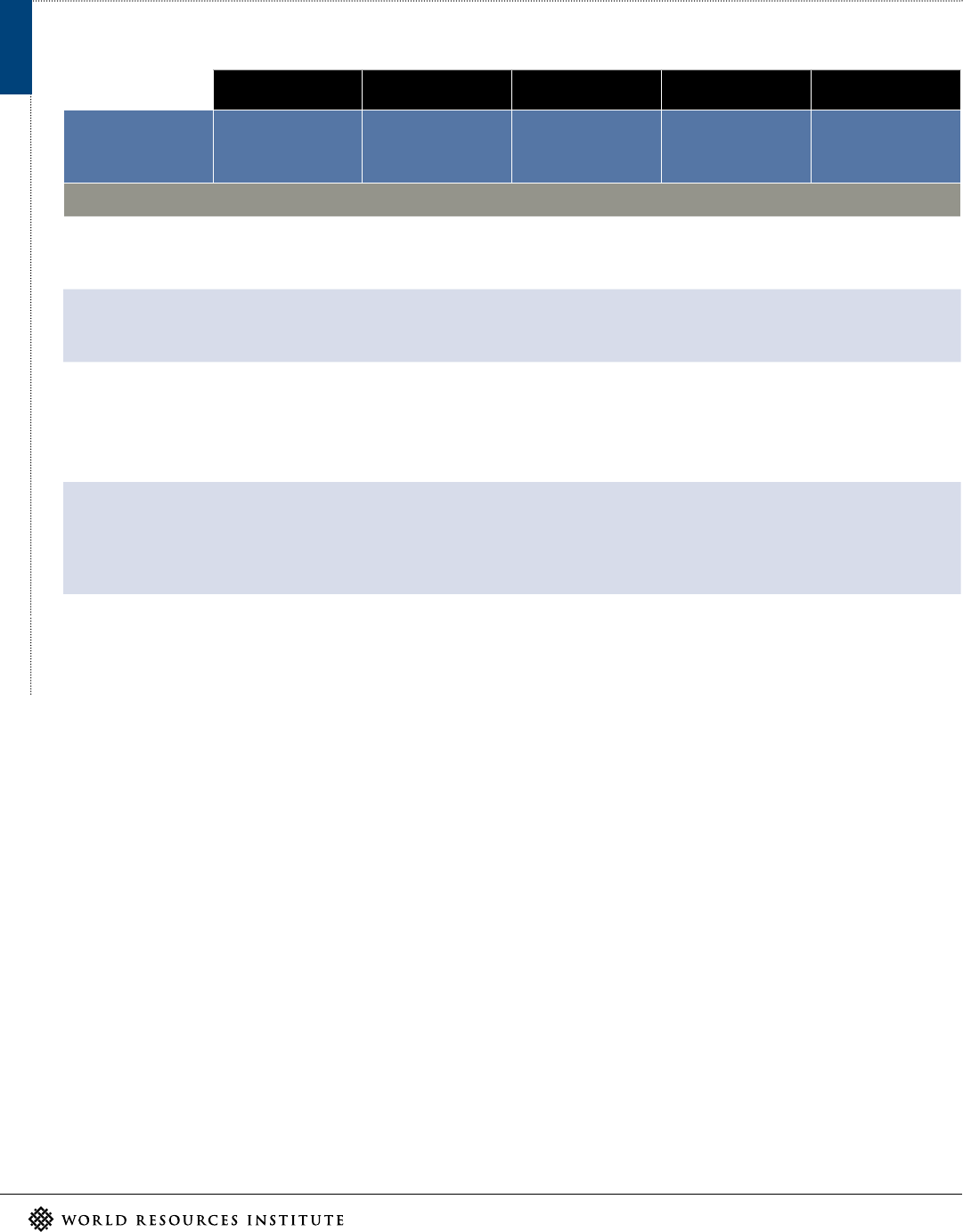
22 |
Blue Bird Lion Thomas IC Bus/Navistar BYD
MODEL BLUE BIRD VISION LIONC
SAFTLINER C
JOULEY
IC CE SERIES
ELECTRIC BUS/
PBE
TYPE C
WARRANTY INFORMATION
Battery 8 years/125,000
miles/160,000 kWh
discharge
8 years/160,000 kWh
discharge (12-year
extend available)
8 years/175,000
miles/200,000 kWh
discharge
8 years/
175,000 miles
15 years
Drive 5 years/
100,000 miles
5 years/
100,000 miles
5 years/ 100,000
miles (motor, trans-
mission, inverter)
5 years/
100,000 miles
5 years/
250,000 miles
Chassis Standard Blue Bird
chassis warranty
(5 years or more)
Standard warranty
bumper to bumper
(8 years)
3 years/
50,000 miles
Standard IC Bus
chassis warranty
(5 years or more);
basic chassis
warranty is 1 year
12 years/
500,000 miles
Additional Not applicable Extended warran-
ties up to 12 years
available
Extended warran-
ties up to 12 years
available
1 year/unlim-
ited mileage for
high-voltage
steering pump, air
compressor
Not applicable
Note: Abbreviations: TBD = to be determined; kWh = kilowatt-hour; °F = degrees Fahrenheit; DCFC = direct current fast charger; L2 = level 2 charger; Mfr. = manufacturer; ABS =
antilock braking system.
Sources: WRI author collaboration with manufacturers listed in table.
a.
Blue Bird: Farquer 2021; NYOGS 2022;
b.
Lion: KCRISD 2020; HPS 2020;
c.
Thomas: Farquer 2021; Lydersen 2021;
d.
IC
Bus/Navistar: NYOGS 2022; KDE 2022.
AVAILABLE NEWLY MANUFACTURED ELECTRIC SCHOOL BUSES TYPE C CONT.
TABLE
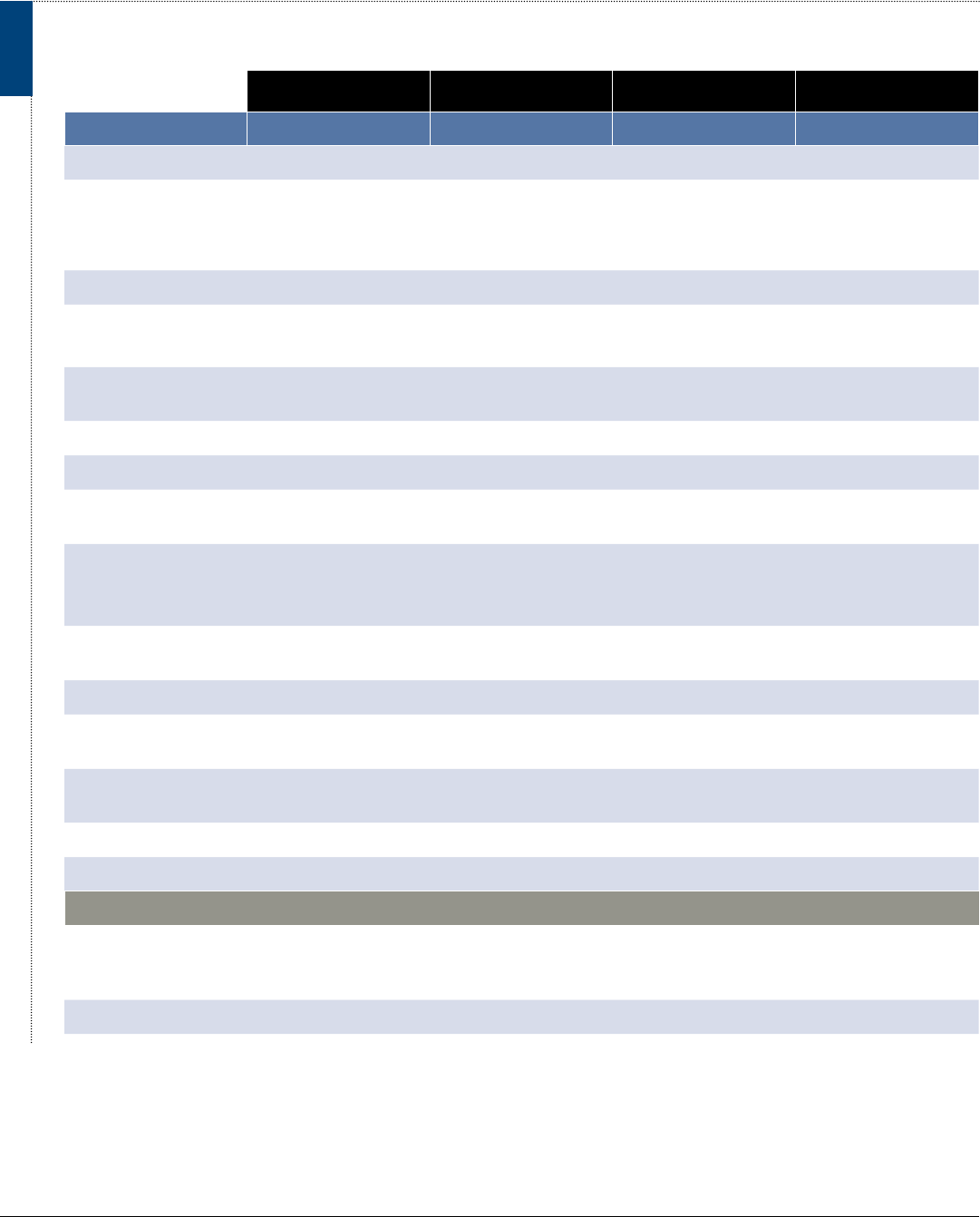
Electric School Bus U.S. Market Study and Buyer’s Guide: A Resource for School Bus Operators Pursuing Fleet Electrification
ISSUE BRIEF | June 2022 | 23
AVAILABLE NEWLY MANUFACTURED ELECTRIC SCHOOL BUSES TYPE D
Blue Bird Lion GreenPower BYD
MODEL ALLAMERICAN LIOND BEAST TYPE D
Price range $340,445–$373,239
a
Not available $371,900
b
Not available
Length (L)/width (W)/
height (H)
L: Max 489”
W: 96”
H: 123”
L: 473”
W: 102”
H: 122”
L: 480”
W: 102”
H: 138”
L: 435”/462”/486”
W: 102”
H: 132.9”
Passenger capacity 84 83 90 84
Charger connector L2: J1772
DCFC: CCS1
L2: J1772
DCFC: CCS1
L2: J1772
DCFC: CCS1
L2: J1772
DCFC: CCS1
Capable of bidirectional
charging
Yes Yes Yes Optional
Battery size (kWh) 155 126/168 193.5 255.5
Range (miles) 120 100/125 150 155
Battery thermal
management
Liquid cooled Liquid cooled PTC for heating, liquid
cooled
Water cooling
Recharge time L2 (19.2 kW): 8 hours
DCFC (60 kW): 3 hours
L2 (19.2 kW): 6.5–11 hours
DCFC: (24 kW) 5–9 hours or
(50 kW) 2.5–4.25 hours
L2 (19.2 kW): 10.5 hours
DCFC (60 kW): 3.5 hours
L2 (20 kW max): 12.5–13
hours
DCFC (150 kW): 1.5–2 hours
Charge port location
options
Rear of bus/front
driver’s side
Rear passenger Rear driver’s side Rear curbside
Electric drivetrain (Mfr.) DANA TM4 DANA TM4 SUMO-MD TM4 BYD
Transmission (direct
drive/2-speed)
None
(direct drive)
None
(direct drive)
None
(direct drive)
None
(direct drive)
Brakes (air/hydraulic) Air (disc or drum) Air Air disk brakes, ABS Front/rear air disc
brakes, ABS
Heat type (electric/diesel) Electric Auxiliary diesel or electric Electric Electric or diesel
Delivery time 8 months 7–9 months 6 months Not available
WARRANTY INFORMATION
Battery 8 years/125,000
miles/160,000 kWh
discharge
8 years/160,000 kWh
discharge (12-year extend
available)
5 years/100,000 miles 15 years
Drive 5 years/100,000 miles 5 years/100,000 miles 5 years/100,000 miles 5 years/250,000 miles
TABLE
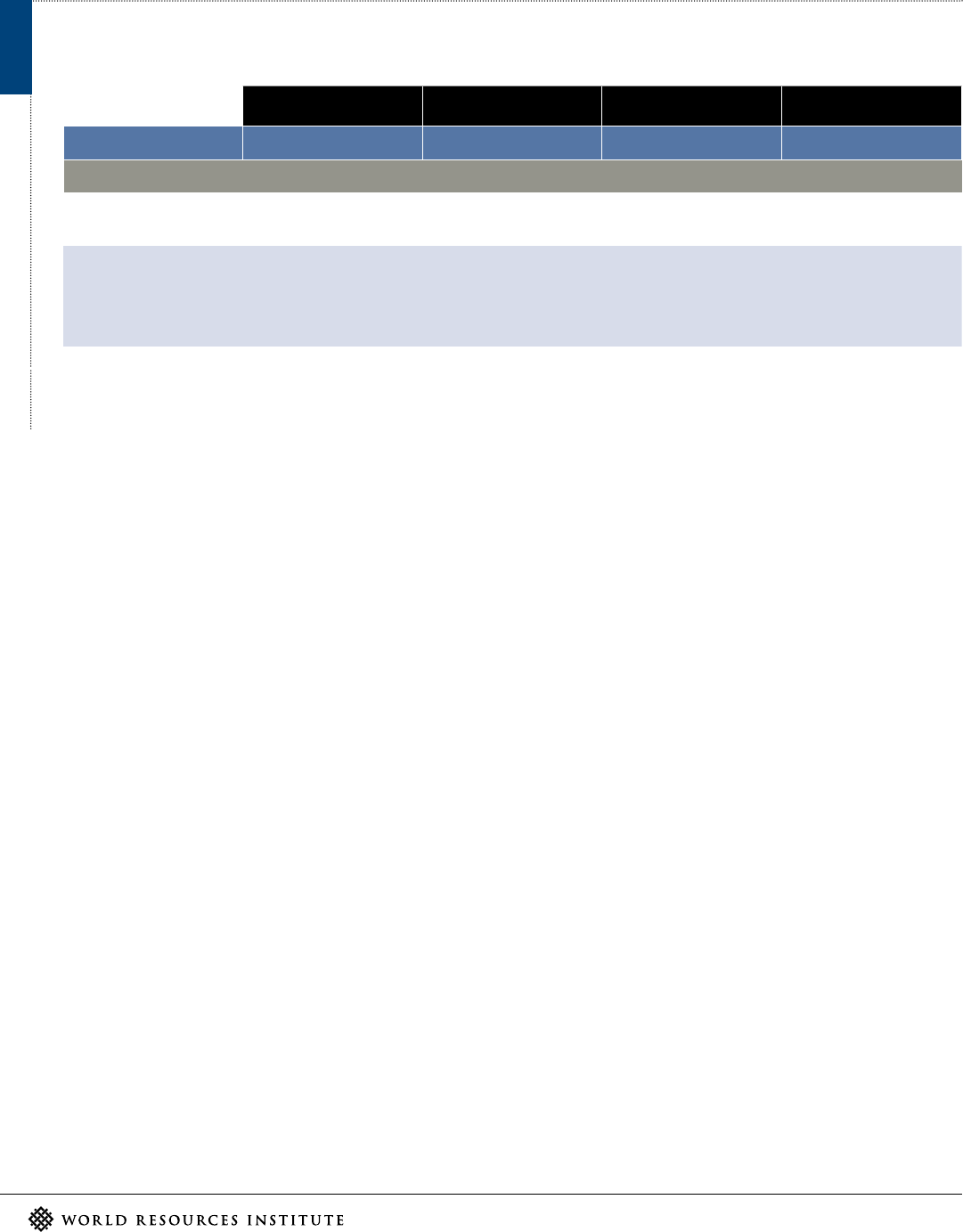
24 |
3.2 Repowered Electric School Buses
(Types A, C, and D)
Electric repowering is the process of taking an existing
school bus, removing the internal combustion engine
components, and replacing them with a new electric
powertrain and high-voltage battery (Kelly and Gonzales
2017).
7
Repowered buses can be half the price of a newly
manufactured electric bus, be assembled in a shorter
timeframe, and work within an existing eet by extending
the useful life of the bus body (Wachunas 2022).
Additionally, repowered buses present an opportunity to
reduce scrappage and waste—and with fewer components
required to complete a build, repowers can limit
susceptibility to supply chain delays. A eet can consist of
both repowered and newly manufactured buses as both
use the same charging infrastructure.
As of April 2022, there were three companies oering
repower solutions—SEA Electric, Unique Electric
Solutions, and Lightning eMotors. Table 5 shows
currently available options for repowered ESBs from
these three manufacturers. As this approach grows in
popularity and availability, repower kits, produced by
these types of companies, could be used by entities such
as dealers and post-production service providers to
repower buses nationwide. A repower kit would include
all the necessary components and software to fully
integrate a new electric powertrain into an existing bus.
Even with this range of benets, ESB repowering is not
without its own set of challenges. On the regulatory
side, some states have regulations capping school bus
age. In those states, the potential for repowering is
limited because buses generally retain their vehicle
identication number and therefore their age is not
reset after being repowered. Additionally, not all federal
funding streams for ESBs can currently be applied to
repowers. As of April 2022, repowers remained an
emerging solution that could bring dramatic cost savings
but had not yet experienced scaled deployment. As this
solution matures, it is expected that repowers will play
an important role in supporting the full electrication of
school bus eets. Notable commitments include Unique
Electric Solutions’ deployment of ve repowered Type
C buses in New York City and SEA Electric’s deal with
Midwest Transit Equipment to repower 10,000 school
buses through 2026.
Blue Bird Lion GreenPower BYD
MODEL ALLAMERICAN LIOND BEAST TYPE D
WARRANTY INFORMATION
Chassis Standard Blue Bird chassis
warranty (5 years or more)
Standard warranty bumper
to bumper (8 years)
3 years 12 years/500,000 miles
Additional Not applicable Up to 12 years Additional warranties
oered for various parts
Extended warranties avail-
able case by case
Not applicable
Note: Abbreviations: TBD = to be determined; kWh = kilowatt-hour; PTC = positive temperature coeicient; DCFC = direct current fast charger; L2 = level 2 charger; Mfr. = manufacturer;
ABS = antilock braking system.
Sources: WRI author collaboration with manufacturers listed in table.
a.
Blue Bird: KDE 2022; NYOGS 2022;
b.
GreenPower: Walker 2020.
AVAILABLE NEWLY MANUFACTURED ELECTRIC SCHOOL BUSES TYPE D CONT.
TABLE
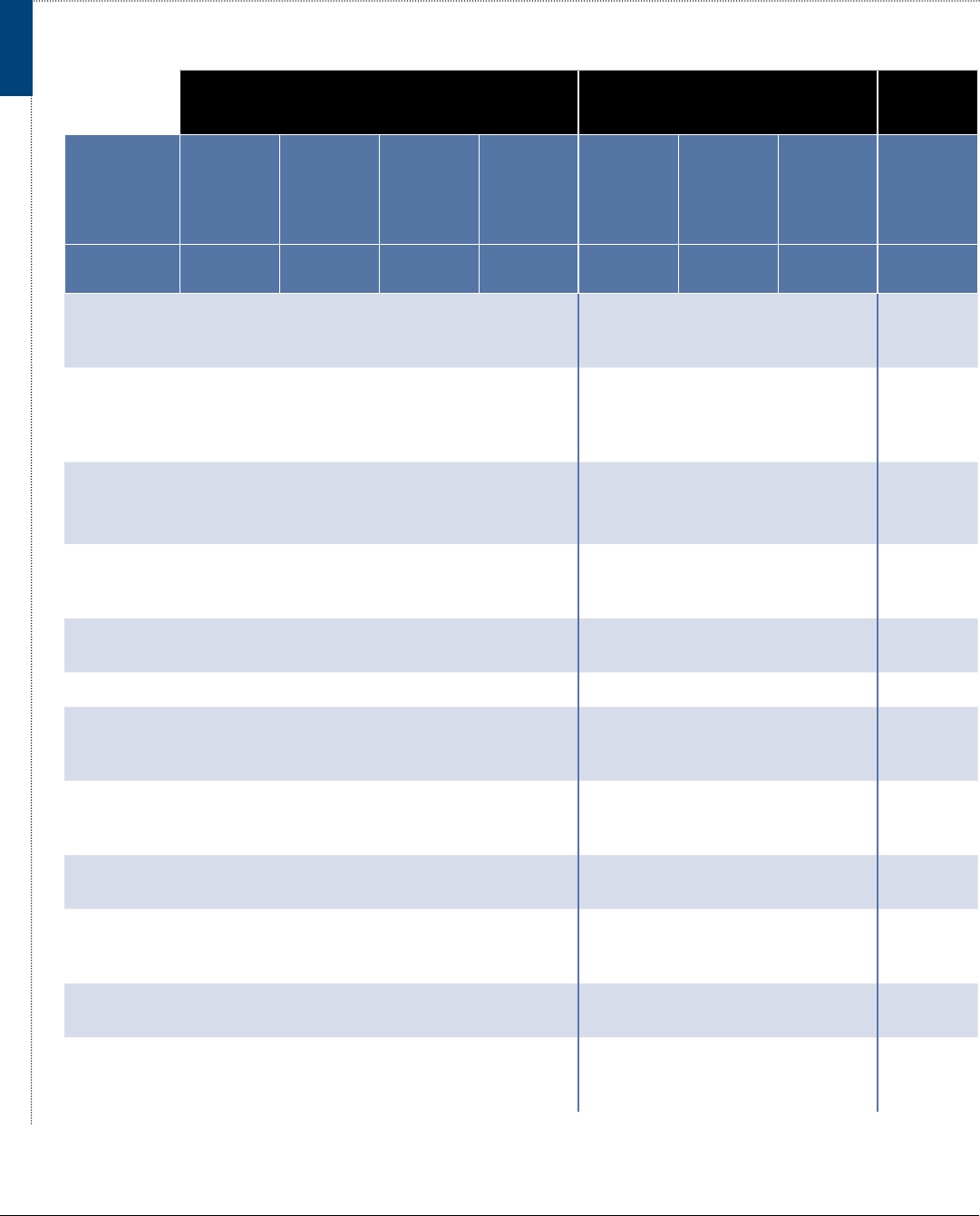
Electric School Bus U.S. Market Study and Buyer’s Guide: A Resource for School Bus Operators Pursuing Fleet Electrification
ISSUE BRIEF | June 2022 | 25
AVAILABLE REPOWERED ELECTRIC SCHOOL BUSES TYPES A, C, AND D
SEA Electric Unique Electric Solutions
Lightning
eMotors
MODEL
SEA DRIVE
A/SEA
DRIVE A/
SEA DRIVE
B
SEA DRIVE
A/SEA
DRIVE B/
SEA DRIVE
C
SEA DRIVE
A
SEA DRIVE
B
UNIQUEEV
PLATFORM
TYPE A
UNIQUEEV
PLATFORM
TYPE C
UNIQUEEV
PLATFORM
TYPE D
ELECTRIC
E
BUS TYPE
A, C, D
A C C AND D D A C D A
Manufacturer
list price
Work with local dealer $85,000 $125,000 $150,000 $119,900
(powertrain
only)
Charger model SAE J1772 compliant Compatible with all major brands Compat-
ible with
all major
brands
Charger
connector
L2: Type 1, Single Phase (208/240 VAC) up to 19.2 kW
DCFC (optional): provided through standard CCS1 (Type A,
up to 100 kW)
L2: SAE J1772
DCFC: CCS1
L2: SAE J1772
DCFC: CCS1
Capable of
bidirectional
charging
Yes Yes Yes Yes Yes Yes
Battery size
(kWh)
88–100 138 220 220 Up to 100 Up to 200 Up to 200 120
Range (miles) Not available 170–200 Not available Not available Up to 180 100
Battery
thermal
management
Engineered out the need for thermal management Yes Dynamic
liquid cooled
system
Charge port
location
options
Flexible charge port location Front, back,
left, right
Front, back,
right
Front, back,
right
Front driver
fender
Electric drive-
train (Mfr.)
JJE/Dana/provider agnostic Unique Electric Solutions Cascadia
Motion
Transmis-
sion (direct
drive/2-speed)
None
(direct drive)
None
(direct drive)
Direct drive
or 2-speed
Direct drive
or 2-speed
None
(direct drive)
Brakes (air/
hydraulic)
Hydraulic Hydraulic/air Air Air Hydraulic Air Air Hydraulic
Heat type
(electric/
diesel)
Electric Either electric or fuel fired Electric
driver and
cabin heat
TABLE

26 |
4. CONCLUSION
Although school bus electrication is still in its early
stages, the school transportation industry has made
considerable progress since the rst ESBs were deployed
in 2014. In particular, the ESB model range has
grown—from 60 to 100 miles during Kings Canyon’s
and Escondido’s 2014 deployments to models today that
oer between 75 and 210 miles in range, depending on
bus type and model. These vehicles were once limited
to a handful of pilot programs, but by March 2022, the
number of school districts procuring electric models and
integrating them into their eets had grown to 415. At
the same time, the number and production capacity of
ESB manufacturers has grown substantially, and vehicle
features, such as range and bidirectional charging,
have improved considerably. As of January 2022,
manufacturers oered 22 models of ESBs across Type A,
C, and D school buses with more expected to enter the
market. Like any new technology, there are still barriers
to adopting these buses, such as high upfront bus prices
and new infrastructure needs, reliability issues with
earlier bus models, and insucient access to specialized
maintenance and technical support. However, ESBs
could provide a number of benets, such as lowering
operations and maintenance costs, reducing pollution
and emissions, improving students’ health and academic
outcomes, and bolstering resilience. As school districts
navigate this growing market, we hope this publication
and its future updates will serve as a valuable resource
for school transportation providers interested in adopting
electric school buses.
SEA Electric Unique Electric Solutions
Lightning
eMotors
MODEL
SEA DRIVE
A/SEA
DRIVE A/
SEA DRIVE
B
SEA DRIVE
A/SEA
DRIVE B/
SEA DRIVE
C
SEA DRIVE
A
SEA DRIVE
B
UNIQUEEV
PLATFORM
TYPE A
UNIQUEEV
PLATFORM
TYPE C
UNIQUEEV
PLATFORM
TYPE D
ELECTRIC
E
BUS TYPE
A, C, D
A C C AND D D A C D A
Delivery
timeline
Electrify in less than 1 month 1–1.5 months 2 months
(dependent
on chassis
availability)
WARRANTY INFORMATION
Battery 8 years (optional extension up to 12 years) Up to 8 years 5 years/
60,000 miles
Drive 3 years/50,000 miles Up to 8 years 5 years/
60,000 miles
Note: Abbreviations: kWh = kilowatt-hour; DCFC = direct current fast charger; L2 = level 2 charger; Mfr. = manufacturer; ABS = antilock braking system.
Source: WRI author collaboration with manufacturers listed in table.
AVAILABLE REPOWERED ELECTRIC SCHOOL BUSES TYPES A, C, AND D CONT.
TABLE
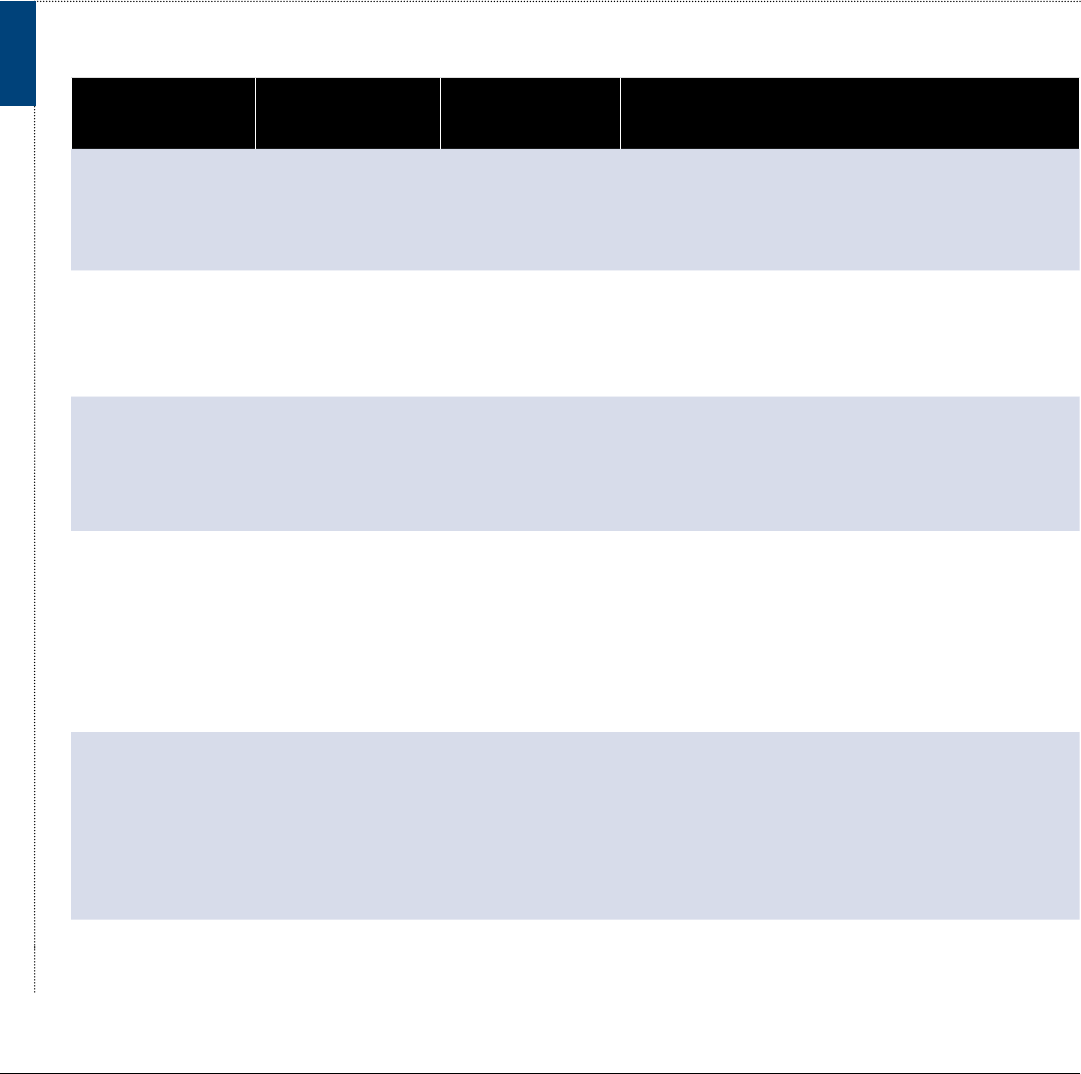
Electric School Bus U.S. Market Study and Buyer’s Guide: A Resource for School Bus Operators Pursuing Fleet Electrification
ISSUE BRIEF | June 2022 | 27
APPENDIX A.
KEY TERMS AND DEFINITIONS: COMPARING
DIESEL AND ELECTRIC SCHOOL BUSES
The following tables provide key terms, units, definitions, and parallels to
diesel operations, where applicable, for ESBs. Table A1 defines terms, and
Table A2 defines units.
ELECTRIC SCHOOL BUS KEY TERMS, DEFINITIONS, AND PARALLELS TO DIESEL OPERATIONS
Term Definition
Parallel to Diesel
(if applicable)
Reference or Example
state of charge (SOC) For buses:
The charge level of the
battery
Fuel tank level (full/
half/empty)
SOC refers to the level of charge left in the battery, which ranges
from 0 to 100% or empty to full on the dashboard.
state of health (SOH) For buses:
Battery health and
useful life
No exact diesel
parallel; however,
general wear and tear
has similarities
SOH refers to the maximum charge or capacity of the battery
over time and use. Repeated complete discharge or use of a full
battery charge (i.e., running until empty) can accelerate battery
degradation. Degradation is a normal part of the battery life
cycle and will decrease gradually over time.
alternating current (AC) For chargers:
A type of electrical
current associated with
the charger
Refueling—a diesel
pump and hose equate
to a charger and
connector cable
AC is used to describe the electrical current coming from the
grid into a charger.
It typically takes longer to charge a bus (8 hours) using AC and
likely requires overnight charging but is cheaper than fast char-
gers with regard to hardware, installation, and utility upgrades.
direct current (DC) For chargers:
A type of electrical
current associated with
the charger
Refueling—a diesel
pump and hose equate
to a charger and
connector cable
DC is used to describe the electrical current coming from a
charger into the bus.
Unlike AC chargers, DCFCs deliver DC current directly to the
battery so they can charge school buses at faster rates (1.5–4
hours). Fast charging is approximately 8–10 times the cost of
L2 charging for the hardware and may incur additional demand
charges for electricity. Fast charging may have more of a detri-
mental eect on battery life and longevity.
bidirectional charging
capacity
For buses and
chargers:
Allows vehicles to both
receive and deliver
energy externally (V2G,
V2B, V2L—collectively
V2X)
Unique to electric
vehicles
Vehicle-to-grid (V2G): Stored energy is delivered back through
facility infrastructure (reverse power flow) to the grid.
Vehicle-to-building (V2B): Stored energy in the vehicle is
delivered to a facility/building, enabling the bus to serve as an
emergency power source.
Vehicle-to-another-load (V2L): V2L allows the bus to serve as a
mobile charging source to power another load.
Note: Abbreviations: AC = alternating current; DCFC = direct current fast charger; L2 = level 2.
Sources: WRI authors; CTE 2020; KCM 2020; Aamodt et al. 2021.
TABLE A
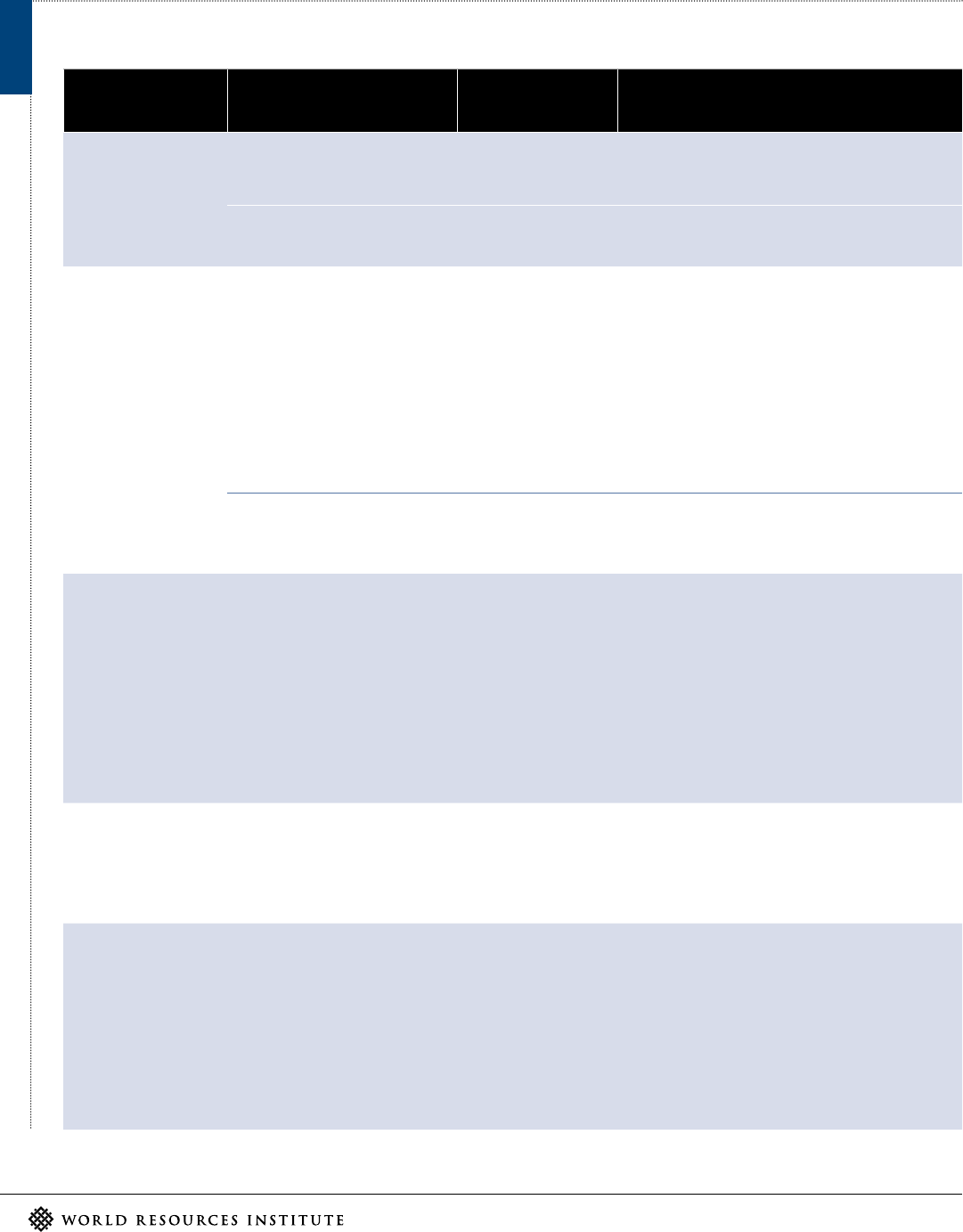
28 |
ELECTRIC SCHOOL BUS KEY UNITS, DEFINITIONS, AND PARALLELS TO DIESEL OPERATIONS
Unit Definition
Parallel to Diesel
(if applicable)
Reference or Example
kilowatt (kW) For buses:
Measure of power
Horsepower (HP) Manufacturers specify a bus motor’s power in kW. For
example, a typical electric motor can provide 230 kW
(308 HP).
For chargers:
Measure of power
No diesel parallel Dierent vehicle chargers can deliver electricity at
dierent power levels.
kilowatt-hour (kWh) For buses:
Measure of battery pack energy
capacity either as rated (adver-
tised total battery capacity for
vehicle), usable (actual accessible
battery capacity for operating), or
passively consumed (while bus is
not driving but still powered on)
Unit can be used to measure
range in miles
Fuel tank capacity
(gallons)
Manufacturers specify an electric bus’s range in kWh.
For example, a typical ESB uses a 150 kWh battery
pack with an 80-to-120-mile range (depending on
conditions) and a typical diesel bus has a 60-gallon
diesel tank with a 450-mile range. This equates to
approximately 1.3 kWh/mile for an ESB and 7.5 miles/
gallon for a diesel bus.
Today’s ESB models have the range to serve more
than 90% of routes in the United States.
For chargers:
Kilowatts multiplied by total hours,
which is a measure of energy
Gallon or liter of fuel kWh are measured by a utility and charged to
customers on their electricity bills.
kWh per mile (kWh/mi) For buses:
The battery capacity (kWh) used
for every mile driven
Unit can be used to measure
eiciency
Miles per gallon Eiciency can be calculated by dividing the battery
pack size by the range. For a typical 150 kWh battery
pack with a stated range of 100 miles, the bus would
have an eiciency of 1.5 kWh per mile (150 kWh/100
miles = 1.5 kWh/mile). Models described in this
report range between 0.78 and 1.61 kWh per mile.
However, eiciency is route and climate dependent
and impacted by use of air conditioning, heat, or
other factors. The greater the eiciency, the lower
the energy cost per mile—eiciency can be further
improved by eicient driving.
amperes (amps) For buses and chargers:
Measure of electrical current
Both diesel and
electric buses have
components that are
measured in amps—
some applications vary
Amps are an important unit for measuring utility
capacity to support chargers.
For example, each L2 charger requires approximately
40–60 amps while each DC fast charger requires a
minimum of 120 amps.
volts (V) For buses and chargers:
Measure of electric potential or
electromotive force
Both diesel and
electric buses have
components that are
measured in volts—
some applications vary
Voltage varies by battery size and state of charge.
For example, both diesel and electric buses have a 12
V battery to power low-voltage components like the
radio, clocks, and lights—this battery also provides
the starter motor and spark plugs with the energy
needed to start an internal combustion engine.
With regard to charging, L2 chargers typically use a
208 or 240 V AC power and DC fast chargers can use
200–600 V DC power.
TABLE A

Electric School Bus U.S. Market Study and Buyer’s Guide: A Resource for School Bus Operators Pursuing Fleet Electrification
ISSUE BRIEF | June 2022 | 29
Unit Definition
Parallel to Diesel
(if applicable)
Reference or Example
acceptance rate For buses:
The power the bus can receive
from the charger
No diesel parallel For example, if the acceptance rate is 9.6 kW, the
maximum power the vehicle can draw is 9.6 kW.
delivery rate For chargers:
The power the charging station
can deliver to the vehicle
No diesel parallel For example, if the delivery rate is 9.6 kW, the
maximum power the charging station can deliver
is 9.6 kW even though the vehicle might be able to
accommodate higher-level charging.
Note: Abbreviations: ESB = electric school bus; L2 = level 2; DC = direct current; AC = alternating current.
Sources: WRI authors; CTE 2020; KCM 2020; Aamodt et al. 2021.
ELECTRIC SCHOOL BUS KEY UNITS, DEFINITIONS, AND PARALLELS TO DIESEL
OPERATIONS CONT.
TABLE A
APPENDIX B. ADDITIONAL RESOURCES
Additional resources that can provide information on ESBs include
the following:
World Resources Institute Resources
▪
Homepage, Electric School Bus Initiative: https://www.wri.org/insights/
where-electric-school-buses-us
▪
Blog Post: “The State of Electric School Bus Adoption in the US” with
accompanying dataset—dataset and visualization of ESB adoption
nationwide (blog: https://www.wri.org/insights/where-electric-
school-buses-us; dataset: https://datasets.wri.org/dataset/electric_
school_bus_adoption)
▪
Highlight Stories—school district experiences with deployment of ESBs
including in Stockton, California (https://www.wri.org/update/electric-
school-bus-series-stockton-california), Knox County, Missouri (https://
www.wri.org/update/electric-school-bus-series-knox-county), and
Fairfax County, Virginia (https://www.wri.org/update/electric-school-
bus-series-electrifying-partnership-fairfax-county-virginia)
Webinar Recordings and Presentations
▪
CTE. 2020. “Electric School Bus Webinar Series.” https://cte.tv/ctes-
electric-school-bus-webinar-series/—Three parts: buses, charging, and
costs and funding
▪
Vermont Energy Investment Corporation. 2019. “Electric School Bus
Planning and Lessons Learned.” https://www.veic.org/clients-results/
reports/electric-school-bus-resources—Webinar
▪
Dallas Fort Worth Clean Cities. 2022. “EV School Bus.” https://www.
dfwcleancities.org/events—Three-part webinar series
Electric School Bus Reports and Resources
▪
Alliance for Electric School Buses. 2022. Washington, DC: electric-
schoolbuses4kids.org—Resources for advocates and other members
of the community.
▪
Bellwether Education Partners. 2019. From Yellow to Green: Reduc-
ing School Transportation’s Impact on the Environment. Sudbury, MA:
Bellwether Education Partners. https://bellwethereducation.org/sites/
default/files/Bellwether_WVPM-YellowToGreen_FINAL.pdf—Examines
cases of ESB pilots, pros and cons of impact reduction strategies, fund-
ing streams, and recommended next steps for states and districts
▪
CALSTART. 2021. Zeroing In on Electric School Buses—The Advanced
Technology School Bus Index: A U.S. ESB Inventory Report. Pasadena,
CA: CALSTART. https://calstart.org/wp-content/uploads/2022/01/ZIO-
Electric-School-Buses-2021-Edition.pdf—Inventory of the number of
ESBs currently present within the United States
▪
CALSTART. 2021. Electric School Bus Market Report. Pasadena, CA:
CALSTART. https://calstart.org/wp-content/uploads/2021/12/Electric-
School-Bus-Market-Report-2021.pdf—Includes vehicle design and
model availability, cost considerations, demonstration case studies, and
funding opportunities
▪
Electrification Coalition. 2021. “Dashboard for Rapid Vehicle Electrifica-
tion (DRVE Tool).” Washington, DC: Electrification Coalition. https://www.
electrificationcoalition.org/resource/drve/—Microsoft Excel–based tool
that can evaluate a variety of procurement ownership structures, vehi-
cle types, electric vehicle charging configurations, and other scenarios

30 |
▪
Jobs to Move America. 2022. Driving the Future: How to Electrify Our
School Buses and Center Kids, Communities, and Workers in the Transi-
tion. Los Angeles, CA: Jobs to Move America. https://jobstomoveamerica.
org/resource/driving-the-future-how-to-electrify-our-school-buses-
and-center-kids-communities-and-workers-in-the-transition/—Insights
from conversations with school districts, private fleet operators,
utilities, worker organizations, and others; provides an overview of the
state of ESB technology, workforce impacts, and opportunities and
policy implications
▪
Oregon Department of Energy. 2022. Guide to School Bus Electrification.
Salem, OR: Oregon Department of Energy. https://www.oregon.gov/
energy/energy-oregon/Documents/2022-Jan-14-School-Bus-Electrifi-
cation-Guidebook.pdf—Guide to school districts on the benefits and
challenges of electric buses, how to get started, selecting a manu-
facturer, and more
▪
School Transportation News. 2022. 2022 Buyers Guide. https://content.
yudu.com/web/1qiu9/0A1rp8i/bg22/html/index.html?origin=reader—
School—Bus buyer’s guide including but not limited to electric variants,
with contact information for manufacturers and dealers
▪
U.S. PIRG and Environment America. 2021. Accelerating the Transition
to Electric School Buses. https://environmentamericacenter.org/sites/
environment/files/reports/US_EL%20buses%202021%20Final.pdf—
How schools, lawmakers, and utilities can work together to speed the
transition to zero-emission buses
▪
Vermont Energy Investment Corporation. 2019. “Electric School Bus Re-
sources.” https://www.veic.org/clients-results/reports/electric-school-
bus-resources—Resources include bus model comparisons, utility bill
considerations, a charging guide, funding tips, and fuel comparisons
▪
Vermont Energy Investment Corporation. 2018. Electric School Bus Pilot
Evaluation. Winooski, VT: VEIC. https://www.veic.org/clients-results/
reports/electric-school-bus-pilot-project-evaluation—Pilot project
was a first-of-its-kind deployment of ESB technologies in cold weather
environments in the United States
Electric School Bus Manufacturer Websites
▪
Blue Bird (https://www.blue-bird.com/buses/electric-school-buses)
▪
BYD (https://en.byd.com/bus/school-bus/)
▪
Endera (https://enderamotors.com/)
▪
GreenPower (https://greenpowermotor.com/gp-products/
beast-school-bus/)
▪
IC Bus/Navistar (https://www.icbus.com/electric)
▪
Lightning eMotors (https://lightningemotors.com/e-450-school-bus/)
▪
Lion (https://thelionelectric.com/en/products/electric)
▪
Micro Bird (https://www.microbird.com/our-buses/G5-Electric)
▪
Motiv (https://www.motivps.com/application/electric-school-bus/)
▪
Phoenix Motorcars (https://www.phoenixmotorcars.com/products/)
▪
SEA Electric (https://www.sea-electric.com/products/indus-
tries-applications/)
▪
Thomas Built Buses (https://thomasbuiltbuses.com/electric-school-
buses/electric-bus/)
▪
Unique Electric Solutions (https://www.uesmfg.com/electric-school-
bus-conversions/)

Electric School Bus U.S. Market Study and Buyer’s Guide: A Resource for School Bus Operators Pursuing Fleet Electrification
ISSUE BRIEF | June 2022 | 31
GLOSSARY
alternating current/direct current (AC/DC) charging: Buses that use
level 2 chargers powered by AC input require an onboard charger built into
the bus. This converts the AC current to DC before reaching the battery.
Buses using DC fast chargers do not require an onboard charger as the
external charger can charge the battery directly.
battery thermal management: Vehicles have a cooling and heating sys-
tem to maintain a specific battery pack temperature range during operation
and charging based on the manufacturer’s design. This helps the batteries
operate safely and maintain peak performance.
brakes (air/hydraulic): The vehicle braking system uses either air or
brake fluid (hydraulic) to compress the brakes. This impacts the required
skills needed to maintain the vehicles. Air brakes require the use of an air
compressor, which draws from the battery and may impact advertised
range. Vehicles with air brakes require a specialized license to operate.
capable of bidirectional charging: Buses that are capable of vehicle-
to-grid (V2G), vehicle-to-building (V2B), and vehicle-to-another-load (V2L)
are also referred to as being capable of bidirectional charging because of
the two-way flow. A vehicle capable of V2G/V2B/V2L (collectively V2X) can
serve as a clean energy asset through energy storage, which can produce
energy cost savings depending on time of charge and discharge.
charger port: The charger port delivers electric current from the charging
hardware to the battery. The charger cable connection type is specific to
the vehicle. It is best for fleets to use the same charger connector, but adap-
tors are available. SAE J1772 is the industry standard for level 2 (L2) charger
connectors. Direct current fast chargers can use either a CHAdeMo or CCS
connector. While the CCS plug allows for alternating current and direct
current charging on the same port (i.e., L2 or direct current fast charging)
as ports come with both CCS and J1772 plugs, CHAdeMo would require an
additional J1772 connector to charge with L2.
heat type (electric/diesel): The heating of the vehicle can be either
electric powered or fuel (diesel) powered for driver and/or cabin heat. The
manufacturer should be consulted on whether heat pumps should be used
to achieve the desired results.
managed charging: Managed charging refers to any form of control
over when vehicles are charging, integrated either into the charger itself
or through some outside switch, which allows the site owner to remotely
control activation and deactivation of the charger. Proper application of
managed charging not only enables the site owner to take advantage of
potential cheaper energy but may also allow for planned fleet manage-
ment where higher-priority vehicles are charged first. Networked and
controlled charging may also oer the ability to distribute charging across
the chargers in use so that higher energy is provided to a smaller number
of vehicles: As more vehicles plug in, the total available energy can be
distributed at a lower level to more vehicles. This scenario can work well for
overnight charging where vehicles sit for long periods without use. Overall,
managed charging oers site owners and fleet managers many more op-
tions to optimize fleets than chargers without controls.
park out: In some circumstances, for operational eiciency or convenience,
some school bus operators allow buses to be parked in remote locations
between shifts or overnight. This could include being parked at or near a
driver’s home. These operating conditions need to be considered when
planning for charging infrastructure. Solutions could include utilizing
public charging or installing chargers at other sites such as schools or
drivers’ homes.
range: Battery capacity, which influences range, can be broken into two
components: rated capacity and usable capacity. The rated capacity cap-
tures the advertised total capacity of the vehicle while the usable capacity
is the actual accessible battery capacity for operating (i.e., some manufac-
turers may reserve 10 percent of the battery for critical loads). For example,
if a school bus is advertised as having 150 kilowatt-hours (kWh) of battery
capacity, only 90 percent (135 kW) may be accessible for driving. Range can
also be impacted by idling—there are significant potential cost and emis-
sion savings for vehicles that idle often, like school buses. Rated and usable
capacity and energy used idling are all measured in kWh.
regenerative braking: Regenerative braking is a braking system unique
to vehicles with electric motors that converts the vehicle’s kinetic energy
during braking directly into electrical energy that can be used to recharge
the battery pack. It allows electric vehicles to recoup some of the energy
that would otherwise be wasted as the vehicle decelerates. This improves
overall eiciency and range.
time-of-use (TOU) rates: Through TOU rates, utilities charge a customer
on total energy consumed based on the time of day the energy is used.
Utilities send price signals to customers to shift consumption fromwhen
electricity demand is high totimes of day when energy supply is the least
expensive to produce or most abundant from specific resources. Customers
can save money if they align consumption with o-peak times. Often, TOU
rates are designed specifically to support programs like electric vehicle
charging or to encourage use of abundant renewable energy. TOU rates vary
by region and utility, and not all utilities oer TOU rates.
transmission (direct drive/2-speed): Transmission refers to the trans-
mission of power from the motor to the wheels. Options include direct drive
(short drive shaft) and multi-speed transmission.

32 |
ENDNOTES
1. An ESB is considered “committed” starting from the point when a
school district or fleet operator has been awarded funding to purchase
it or has made formal agreement to purchase it from a manufacturer or
dealer. We would not consider an ESB committed if a school district or
other fleet operator only expressed interest in ESBs or stated that they
plan to acquire ESBs, without awarded funding or an agreement with a
third party. More information can be found in L. Lazer and L. Freehafer,
Technical Note for a Dataset of Electric School Bus Adoption in the United
States (Washington, DC: World Resources Institute, 2022), https://www.
wri.org/research/technical-note-dataset-electric-school-bus-adoption-
united-states.
2. Compared with newly manufactured school buses that are built as elec-
tric from the start, a repowered bus removes a vehicle’s existing engine
and replaces it with a new engine or power source (e.g., an electric
drive system). See Section 3.2 for greater detail on repowered buses.
3. More resources from the Electric School Bus Initiative can be found at
https://www.wri.org/initiatives/electric-school-bus-initiative.
4. As part of the settlement between Volkswagen and the federal govern-
ment following allegations that Volkswagen violated the Clean Air
Act by selling vehicles equipped with “defeat devices” (i.e., computer
software designed to cheat on federal emissions tests), Volkswagen
will contribute to an Environmental Mitigation Trust to provide states,
territories, and tribes funding to mitigate sources of nitrogen oxides.
Each state designated a lead implementing agency, conducted
stakeholder meetings, and submitted a state action plan (also known
as a Beneficiary Mitigation Plan, or BMP) for use of the funds. One of
the eligible mitigation actions was the replacement of school buses. To
date, Volkswagen settlement funds have been a critical source of state
funding for transportation electrification. More information can be found
in K. McLaughlin and J. Balik, 5 Ways US States Can Get More Electric
School Buses on the Road (Washington, DC: World Resources Institute,
2022), https://www.wri.org/insights/how-states-can-transition-electric-
school-buses, and Environmental Protection Agency, Volkswagen Clean
Air Act Civil Settlement (Washington, DC: Environmental Protection
Agency, n.d.), https://www.epa.gov/enforcement/volkswagen-clean-air-
act-civil-settlement.
5. Electric school buses were considered part of the same batch if any of
their time-series data (when they were first awarded, ordered, delivered,
or operating) occurred in the same quarter or in adjacent quarters.
Batches can consist of ESBs in any phase of the adoption process,
meaning that not all are currently in operation. Original analysis was
conducted by the Electric School Bus Initiative based on WRI’s Dataset
of Electric School Bus Adoption in the United States: https://datasets.
wri.org/dataset/electric_school_bus_adoption.
6. There are currently no electric models available for Type B school
buses as the United States no longer produces Type B school buses
for any fuel type.
7. Certain specifications for repowers depend on the vehicle being used,
which is why we have removed certain specifications such as passen-
ger capacity, length/width/height, and recharge time.

Electric School Bus U.S. Market Study and Buyer’s Guide: A Resource for School Bus Operators Pursuing Fleet Electrification
ISSUE BRIEF | June 2022 | 33
REFERENCES
Aamodt, A., K. Cory, and K. Coney. 2021. Electrifying Transit: A Guidebook for
Implementing Battery Electric Buses. Golden, CO: National Renewable Energy
Laboratory. https://www.nrel.gov/docs/fy21osti/76932.pdf.
Adams, J.M. 2014. “Electric School Buses Roll Out in Eort to Reduce
Emissions.” EdSource. March 17. https://edsource.org/2014/electric-school-
buses-roll-out-in-eort-to-reduce-emissions/59330.
Ainsalu, J., V. Arman, M. Bellone, M. Ellner, T. Haapamäki, N. Haavisto,
E. Josefson, A. Ismailogullari, B Lee, O. Madland, R. Madžulis, J. Müür, S.
Mäkinen, V. Nousiainen, E. Pilli-Sihvola, E. Rutanen, S. Sahala, B. Schønfeldt,
P.M. Smolnicki, R-M. Soe, J. Sääski, M. Szymańska, I. Vaskinn, M. Åman. 2018.
“State of the Art of Automated Buses.” Sustainability 10 (9): 3118. https://doi.
org/10.3390/su10093118.
ANL (Argonne National Laboratory). 2020. “AFLEET Online.” https://afleet.
es.anl.gov/afleet/.
APP (Atlas Public Policy). 2022. “Medium- and Heavy-Duty Vehicle Dash-
board.” Washington, DC, and San Francisco: Atlas Public Policy. January 13.
http://www.atlasevhub.com/materials/medium-and-heavy-duty-vehicle-
registrations-dashboard/.
Austin, W., G. Heutel, and D. Kreisman. 2019. “School Bus Emissions, Student
Health and Academic Performance.” Economics of Education Review 70
(June): 109–26. doi:10.1016/j.econedurev.2019.03.002.
BloombergNEF. 2021. “Battery Pack Prices Fall to an Average of $132/KWh,
but Rising Commodity Prices Start to Bite.” November 30. https://about.
bnef.com/blog/battery-pack-prices-fall-to-an-average-of-132-kwh-but-
rising-commodity-prices-start-to-bite/.
Blue Bird. 2020. “Blue Bird Expands Production Capacity of Electric Buses
Six-Fold in Response to Surging Demand.” September 10. https://www.
blue-bird.com/about-us/press-releases/185-blue-bird-expands-production-
capacity-of-electric-buses-six-fold-in-response-to-surging-demand.
Blue Bird. 2021a. “Blue Bird Charges Ahead with 500 Electric School Buses
in North America.” Business Wire. June 2. https://www.businesswire.com/
news/home/20210602005713/en/Blue-Bird-Charges-Ahead-with-500-Elec-
tric-School-Buses-in-North-America.
Blue Bird. 2021b. “Blue Bird Reports Fiscal 2021 Third Quarter Results
Focused on Margin Expansion and EV Growth Impacted by Supply Chain
Disruptions.” Business Wire. August 12. https://www.businesswire.com/
news/home/20210812005812/en/Blue-Bird-Reports-Fiscal-2021-Third-
Quarter-Results-Focused-on-Margin-Expansion-and-EV-Growth-Impacted-
by-Supply-Chain-Disruptions.
BTS (Bureau of Transportation Statistics). 2021. “The Longer Route to
School.” Washington, DC: Bureau of Transportation Statistics. https://www.
bts.gov/topics/passenger-travel/back-school-2019.
California HVIP. 2022. “Impact: California HVIP.” Hybrid and Zero-Emission
Truck and Bus Voucher Incentive Project (California HVIP). January. https://
californiahvip.org/impact/.
Casey, M. 2021. “Amid Air Quality Concerns, Districts Embrace Electric
Buses.” Los Angeles Times. October 23. https://www.latimes.com/world-
nation/story/2021-10-23/air-quality-school-districts-electric-buses.
Chispa. n.d. "Clean Buses for Healthy Niños." League of Conservation Voters.
https://lcv.org/chispa/clean-buses-healthy-ninos/. Accessed April 25, 2022.
Cleary, K., and K. Palmer. 2020. “Encouraging Electrification through Energy
Service Subscriptions.” Working paper. Washington, DC: Resources for the
Future. https://media.r.org/documents/WP_20-09_EaaS.pdf.
Clevenger, G., and B. Decker. 2022. Personal communication between
authors and Gary Clevenger, Assistant Director, Facilities & Transporta-
tion, Carmel Clay Schools, and Bill Decker, Garage Supervisor, Carmel Clay
Schools, Carmel, IN. January 7.
CNY (City of New York). 2021. “A Recovery for All of Us: Mayor de Blasio
Commits to 100% Electric School Bus Fleet by 2035.” April 22. http://www1.
nyc.gov/oice-of-the-mayor/news/296-21/recovery-all-us-mayor-de-blasio-
commits-100-electric-school-bus-fleet-2035.
CTE (Center for Transportation and the Environment). 2020. “Electric School
Bus Webinar Series, Part I: Electric Buses.” April 3. https://www.youtube.
com/watch?v=MC63nSXlef0.
DTNA (Daimler Truck North America). 2022. “Highland Electric Fleets and
Thomas Built Buses Sign Agreement to Make Electric School Buses an
Aordable Option Today.” PR Newswire. May 17. https://www.prnewswire.
com/news-releases/highland-electric-fleets-and-thomas-built-buses-
sign-agreement-to-make-electric-school-buses-an-aordable-option-
today-301504830.html.
DTS (Denville Township Schools). 2020. “State of New Jersey Department
of Environmental Protection: Project Solicitation.” Denville, NJ: Denville
Township Schools. https://www.state.nj.us/dep/vw/proposals/phase2/Den-
ville%20Public%20Schools.pdf.
EarthJustice. 2022. “Parents, Advocates, and Elected Oicials Call for
Electric School Bus Funding.” March 10. https://earthjustice.org/news/
press/2022/parents-advocates-and-elected-oicials-call-for-electric-
school-bus-funding.
Edelstein, S. 2014. “California Launches Country’s First All-Electric School
Bus.” Green Car Reports. March 8. https://www.greencarreports.com/
news/1090755_california-launches-countrys-first-all-electric-school-bus.
EDF (Environmental Defense Fund). 2021. “Electric School Bus: Cleaner, Reli-
able, Ready.” February. http://blogs.edf.org/energyexchange/files/2021/02/
ElectricSchoolBusFactSheet.pdf.

34 |
GreenPower (GreenPower Motor Company). 2021. “GreenPower Unveils the
BEAST, a Zero-Emission Electric School Bus.” August 31. https://greenpower-
motor.com/greenpower-unveils-beast-all-electric-school-bus/.
Hannon, T. 2021. “Arizona School District Receives First 84-Passenger
Electric School Bus in State.” School Transportation News. July 29. https://
stnonline.com/news/arizona-school-district-receives-first-84-passenger-
electric-school-bus-in-state/.
Henning, M., A. Thomas, and A. Smyth. 2019. “An Analysis of the Associa-
tion between Changes in Ambient Temperature, Fuel Economy, and Vehicle
Range for Battery Electric and Fuel Cell Electric Buses.” Cleveland, OH:
Cleveland State University, Maxine Goodman Levin College of Urban Aairs.
Urban Publications (November), 33.
HPS (Hawthorne Public Schools, New Jersey). 2020. “State of New Jersey
Department of Environmental Protection: Project Solicitation.” Hawthorne,
NJ: Hawthorne Public Schools. https://www.state.nj.us/dep/vw/proposals/
phase2/Hawthorne.pdf.
Hutchinson, N., and G. Kresge. 2022. “3 Design Considerations for Electric
School Bus Vehicle-to-Grid Programs.” World Resources Institute blog.
February 14. https://www.wri.org/insights/electric-school-bus-vehi-
cle-grid-programs.
ITSJPO (Intelligent Transportation Systems Joint Program Oice, U.S. Depart-
ment of Transportation). 2019. “Non-residential Electric Vehicle Charging
Station Costs Range from $300–$1,500 for Level 1 Chargers, $400–$6,500
for Level 2 Chargers, and $10,000–$40,000 for DC Fast Chargers.” March
26. https://www.itskrs.its.dot.gov/its/benecost.nsf/ID/55617f7960284c85
852583bd004963f6.
Justice, J. 2022. “Gov. Justice Announces GreenPower Motor Company to
Manufacture Zero-Emission, All-Electric School Buses in West Virginia.”
Charleston, WV: Oice of the Governor. January 12. https://governor.wv.gov/
News/press-releases/2022/Pages/Gov.-Justice-announces-GreenPower-
Motor-Company-to-manufacture-zero-emission,-all-electric-school-buses-
in-West-Virginia.aspx.
Kaye, J. 2022. “Advocates Call on Hochul to Speed Up Electric School Bus
Timeline.” Queens Daily Eagle. March 1. https://queenseagle.com/all/advo-
cates-call-on-hochul-to-speed-up-electric-school-bus-timeline.
Kays, H. 2022. “Plugged In: Cherokee Receives State’s First Electric School
Bus.” Smoky Mountain News. March 23. https://smokymountainnews.
com/outdoors/item/33297-plugged-in-cherokee-receives-state-s-first-
electric-school-bus.
KCM (King County Metro). 2020. Battery-Electric Bus Implementation Report:
Interim Base and Beyond. Seattle: King County Metro. https://www.apta.
com/wp-content/uploads/King-County-battery-electric-bus-implementa-
tion-report.pdf.
Ellis, T. 2020. “‘Worked Better than I Expected’: Tok’s Electric School
Bus Passes Cold Weather Test.” KTOO. November 19. https://www.ktoo.
org/2020/11/19/worked-better-than-i-expected-toks-electric-school-bus-
passes-cold-weather-test/.
Energetics Incorporated, Cadmus Group, National Renewable Energy
Laboratory, Idaho National Laboratory, and DAV Energy Solutions. 2021.
Final Evaluation Report: California Investor-Owned Utility Transportation
Electrification Priority Review Projects. https://www.cpuc.ca.gov/-/media/
cpuc-website/divisions/energy-division/documents/sb-350-te/california-te-
prp-final-evaluation-report-presentation.pdf.
ENGIE Impact. 2021. “Grossmont Union High School District and ENGIE
Impact Complete Fleet Electrification Project.” December 14. https://www.
engieimpact.com/news-and-events/grossmont-fleet-electrification.
Ercan, T., M. Noori, Y. Zhao, and O. Tatari. 2016. “On the Front Lines of a Sus-
tainable Transportation Fleet: Applications of Vehicle-to-Grid Technology for
Transit and School Buses.” Energies 9 (4): 230. doi:10.3390/en9040230.
Espinoza, A., and M. Vemireddi. 2018. “New School Year, Same Dirty Buses:
The Case for Electrifying New York’s School Buses.” New York: New York
League of Conservation Voters Education Fund. https://nylcvef.org/wp-
content/uploads/2018/08/ESB_WhitePaper.pdf.
Farquer, T. 2021. “Bus-2-Grid Initiative: Events & Announcements.” January.
https://www.bus2grid.org/events-announcements.
FCPS (Fairfax County Public Schools). 2021a. “First FCPS Electric Bus Arrives
January 12.” Fairfax, VA: Fairfax County Public Schools. January 11. https://
www.fcps.edu/news/first-fcps-electric-bus-arrives-january-12.
FCPS. 2021b. “Fairfax County School Board Sets Goal for Carbon Neutral
Energy Use by 2040.” Fairfax, VA: Fairfax County Public Schools. July 16.
https://www.fcps.edu/news/fairfax-county-school-board-sets-goal-carbon-
neutral-energy-use-2040.
FHA (Federal Highway Administration, U.S. Department of Transportation).
2019. “2017 National Household Travel Survey.” Washington, DC: FHA. April
23. https://nhts.ornl.gov/.
FTA (Federal Transit Administration, U.S. Department of Transportation). n.d.
“Buy America.” Washington, DC: FTA. https://www.transit.dot.gov/buyamer-
ica. Accessed April 22, 2022.
Gissendaner, A. 2021. “School Bus Contractors Stuck in Traic on Road to
COVID-19 Recovery.” School Transportation News. April 27. https://stnonline.
com/special-reports/school-bus-contractors-stuck-in-traic-on-road-to-
covid-19-recovery/.
Gray, R. 2022. “Proposed California Education Budget Includes 3-Year,
$1.5B Electric School Bus Program.” School Transportation News. January
13. https://stnonline.com/news/proposed-california-education-budget-
includes-3-year-1-5b-school-bus-program/.

Electric School Bus U.S. Market Study and Buyer’s Guide: A Resource for School Bus Operators Pursuing Fleet Electrification
ISSUE BRIEF | June 2022 | 35
KCRISD (Knox County R-I School District). 2020. “Bus Project—Grants, Fund-
ing, and Partnerships.” Knox County, MO: Knox County R-I School District.
https://sites.google.com/knoxr1.us/busproject/home/electric-school-bus-
data/grants-funding-and-partnerships.
KDE (Kentucky Department of Education). 2022. 2022 Kentucky School Bus
Purchasing Guide. Frankfort, KY: Kentucky Department of Education. https://
education.ky.gov/districts/trans/Documents/2022%20Purchasing%20
Guide%20-%20Complete_rt-returned%20form%20editing-CM.pdf, 93.
Kelly, K., and J. Gonzales. 2017. What Fleets Need to Know about Alternative
Fuel Vehicle Conversions, Retrofits, and Repowers. Golden, CO: National
Renewable Energy Laboratory. https://afdc.energy.gov/files/u/publication/
afv_conversions_retrofits_repowers.pdf.
Lazer, L., and L. Freehafer. 2022. “A Dataset of Electric School Bus Adoption
in the United States.” Washington, DC: World Resources Institute. https://
datasets.wri.org/dataset/electric_school_bus_adoption.
Levinson, M. 2022. “How to Help Your Community Fund Electric School
Buses in the US.” World Resources Institute blog. January 26. https://www.
wri.org/insights/how-help-your-community-fund-electric-school-buses-us.
Levo Mobility LLC. 2022. “Levo Partners with Troy Community Consolidated
School District 30-C to Facilitate Largest 100% Zero-Emission School Bus
Fleet Conversion Program in the Midwest.” PR Newswire. March 3. https://
www.prnewswire.com/news-releases/levo-partners-with-troy-community-
consolidated-school-district-30-c-to-facilitate-largest-100-zero-emission-
school-bus-fleet-conversion-program-in-the-midwest-301494650.html.
Lewis, M. 2022. “New York State Commits to 100% Electric School Buses by
2035 [Update].” Electrek. April 8. https://electrek.co/2022/04/08/new-york-
state-governor-100-electric-school-buses-2035/.
Lightning eMotors. 2021. “Lightning eMotors Enters the Electric School Bus
Space with Multiyear Agreement with REV Group’s Collins Bus.” August
31. https://lightningemotors.com/lightning-emotors-enters-the-electric-
school-bus-space-with-multiyear-agreement-with-rev-groups-collins-bus/.
Lion Electric. 2021. “Lion Electric Announces U.S. Manufacturing Facility
in Illinois, the Largest All-Electric Medium and Heavy-Duty Vehicles Plant
in the U.S.” May 7. https://thelionelectric.com/documents/en/Project-
Maple-PR-EN.pdf.
Liu, N.M., and J. Grigg. 2018. “Diesel, Children and Respiratory Disease.” BMJ
Paediatrics Open 2 (1): e000210. doi:10.1136/bmjpo-2017-000210.
Lydersen, K. 2021. “Student Transporters Determine Aordability of Electric
School Buses.” School Transportation News. September 15. https://stnonline.
com/special-reports/student-transporters-determine-aordability-of-
electric-school-buses/.
Matthews, K. 2021. “A General Overview of the US School Bus Industry &
Operations.” NSI Consulting. June 1.
McLaughlin, K., and J. Balik. 2022. “5 Ways US States Can Get More
Electric School Buses on the Road.” World Resources Institute blog.
January 13. https://www.wri.org/insights/how-states-can-transition-elec-
tric-school-buses.
MDER (Massachusetts Department of Energy Resources). 2022. “EV
Programs & Incentives.” Boston: Massachusetts Department of Energy
Resources. https://www.mass.gov/info-details/ev-programs-incentives.
MOF (Mothers Out Front). n.d. “Electric School Bus Campaign.” https://
www.mothersoutfront.org/campaigns/electricschoolbus/. Accessed
April 25, 2022.
MOF. 2021. “PRESS RELEASE: Victory! Mothers Out Front Fairfax Elec-
tric School Bus Bill Passes Virginia Legislature.” March 2. https://www.
mothersoutfront.org/news/press-release-victory-mothers-out-front-fairfax-
electric-school-bus-bill-passes-virginia-legislature/.
MPS (Motiv Power Systems). 2014. “America’s Only All-Electric School Bus
Transports Students, Saving California School District Over $10,000 a Year
in Fuel and Maintenance.” PR Newswire. March 3. https://www.prnewswire.
com/news-releases/americas-only-all-electric-school-bus-transports-
students-saving-california-school-district-over-10000-a-year-in-fuel-and-
maintenance-248168111.html.
Nair, V., S. Stone, G. Rogers, and S. Pillai. 2022. Technical Review of:
Medium and Heavy-Duty Electrification Costs for MY 2027–2030. Livonia,
MI: Roush Industries, Inc.; Washington, DC: Environmental Defense Fund.
http://blogs.edf.org/climate411/files/2022/02/EDF-MDHD-Electrification-
v1.6_20220209.pdf.
NCES (National Center for Education Statistics). 2018. “Annual Reports and
Information Sta (Annual Reports): Reference Tables.” Washington, DC:
U.S. Department of Education. https://nces.ed.gov/surveys/annualreports/
topical-studies/locale/reference-tables.
NCES. 2020. “School Locations & Geoassignments.” Washington, DC: U.S.
Department of Education. https://nces.ed.gov/programs/edge/Geographic/
SchoolLocations.
News 12 Sta. 2022. “Environmental Justice Advocates Rally for Electric
School Bus Funding in State Budget.” March 10. https://bronx.news12.com/
environmental-justice-advocates-rally-for-electric-school-bus-funding-
in-state-budget.
NYOGS (New York Oice of General Services). 2022. “40524-23000 School
Buses: Award Summary.” New York: New York Oice of General Services.
https://online.ogs.ny.gov/purchase/spg/pdfdocs/4052423000Summary.pdf.
NYSERDA (New York State Energy Research and Development Authority).
2022. “How to Participate in NYTVIP: Vehicle Fleets.” Albany, NY: NYSERDA.
https://www.nyserda.ny.gov/All-Programs/Truck-Voucher-Program/For-
Vehicle-Fleets.

36 |
O’Hare, B. 2021. “Alaska’s First Electric School Bus Is Managing Minus
40 Temps with Ease.” InsideEVs. November 21. https://insideevs.com/
news/549229/alaska-first-electric-school-bus/.
PCA (Pegasus Capital Advisors). 2014. “Clinton Global Initiative (CGI) Dem-
onstration Project Partner Wins Grant to Build All Electric School Buses.”
July 22. https://pcalp.venus.idealservers.co.uk/insights/press-release/
clinton-global-initiativecgi-demonstration-project-partner-wins-grant-build-
electric-school-buses/.
Proterra. 2019. “Proterra Powered Electric School Buses and Proterra
Charging Systems Selected by Michigan Schools for Pupil Transportation
and Vehicle-to-Grid Pilot Program.” September 12. https://www.proterra.
com/press-release/proterra-powered-electric-school-buses-and-proterra-
charging-systems-selected-by-michigan-schools-for-vehicle-to-grid-
pilot-program/.
Proterra. 2021. “Montgomery County Public Schools Approves the Na-
tion’s Largest Procurement of Electric School Buses with Highland Electric
Transportation.” PR Newswire. February 25. https://www.prnewswire.com/
news-releases/montgomery-county-public-schools-approves-the-nations-
largest-procurement-of-electric-school-buses-with-highland-electric-
transportation-301235236.html.
Riley, B. 2021. “MDI School District Rolls Out State’s First Electric Bus.” Fox 22
WFVX Bangor. September 16. https://www.foxbangor.com/news/item/mdi-
school-district-rolls-out-states-first-electric-bus/.
Rosas, G. 2021. Personal communication between authors and Gilbert
(Gil) Rosas, Energy Education Specialist, Stockton Unified School District,
Stockton, CA. May 10.
SBF (School Bus Fleet). 2021a. “2021 Factbook: Pupil Transportation by the
Numbers.” https://digital.schoolbusfleet.com/publication/?m=65919&i=696
373&p=1&pp=1&ver=html5.
SBF. 2021b. “STA Launches Electric School Bus Pilot Program, Appoints
Leader.” June 7. https://www.schoolbusfleet.com/10145043/sta-appoints-
halley-to-lead-electric-school-bus-initiative.
Schlosser, N. 2019. “Top 100 School District Fleets of 2019.” School Bus Fleet.
October. https://www.schoolbusfleet.com/management/10117399/top-
100-school-district-fleets-of-2019.
Schlosser, N. 2021. “5 Questions: Johana Vicente on Link between Electric
School Buses, Environmental Justice.” School Bus Fleet. June 28. https://
www.schoolbusfleet.com/10146257/johana-vicente-on-link-between-elec-
tric-school-buses-environmental-justice.
SEA Electric. 2021. “Midwest Transit Equipment & SEA Electric to Power
10,000 Electric School Buses.” PR Newswire. December 6. https://www.
prnewswire.com/news-releases/midwest-transit-equipment--sea-electric-
to-power-10-000-electric-school-buses-301437670.html.
Shannon, T., and R. Manalo. 2021. Personal communication between authors
and Tim Shannon, Director of Transportation, Twin Rivers Unified School
District, and Raymond Manalo, Vehicle Maintenance Manager, Twin Rivers
Unified School District, Twin Rivers, CA. December 9, 2021.
Smith, C. 2019. Electric Trucks and Buses Overview. Washington, DC, and
San Francisco: Atlas Public Policy. https://atlaspolicy.com/wp-content/up-
loads/2019/07/Electric-Buses-and-Trucks-Overview.pdf.
Smith, M., and J. Castellano. 2015. “Costs Associated with Non-residential
Electric Vehicle Supply Equipment: Factors to Consider in the Implementa-
tion of Electric Vehicle Charging Stations.” Washington, DC: U.S. Depart-
ment of Energy. https://afdc.energy.gov/files/u/publication/evse_cost_
report_2015.pdf.
Soneji, H., A. Shelton, and B. Chen. 2020. Pittsburg USD Electric School Bus
Final Project Report. Berkeley, CA: Olivine, Inc. https://olivineinc.com/wp-
content/uploads/2020/10/Pittsburg-USD-Electric-School-Bus-Final-Project-
Report-Final.pdf.
STBC (Seman-Tov Bus Company, New Jersey). 2020. State of New Jersey
Department of Environmental Protection Project Solicitation. Neptune, NJ:
Seman-Tov Bus Company. https://www.state.nj.us/dep/vw/proposals/
phase2/Seman-Tov%20Bus%20Company.pdf.
STN. 2021b. “STN June 2021 Issue.” https://content.yudu.com/
web/1qiu9/0A1rp8i/june21/html/index.html?page=34&origin=reader.
STN. 2021c. “Blue Bird Charges Ahead with 800 Electric School Bus Orders
in North America.” October 28. https://stnonline.com/industry-releases/
blue-bird-charges-ahead-with-800-electric-school-bus-orders-in-
north-america/.
Turgeon, A. 2021. Personal communication between authors and
Andy Turgeon, Superintendent, Knox County R-I School District, Knox
County, MO. May 6.
U.S. PIRG (United States Public Interest Research Group). n.d. “Electric
Buses, Healthy Kids.” https://uspirg.org/feature/usp/electric-buses-healthy-
kids. Accessed February 23, 2022.
VEIC (Vermont Energy Investment Corporation). 2018. Electric School Bus
Pilot Project Evaluation. Winooski, VT: VEIC. https://www.mass.gov/files/
documents/2018/04/30/Mass%20DOER%20EV%20school%20bus%20
pilot%20final%20report_.pdf.

Electric School Bus U.S. Market Study and Buyer’s Guide: A Resource for School Bus Operators Pursuing Fleet Electrification
ISSUE BRIEF | June 2022 | 37
Vieira, S.E., R.T. Stein, A.A. Ferraro, L.D. Pastro, S.S.C. Pedro, M. Lemos, E.R.
da Silva, et al. 2012. “Urban Air Pollutants Are Significant Risk Factors for
Asthma and Pneumonia in Children: The Influence of Location on the
Measurement of Pollutants.” Archivos de Bronconeumologia 48 (11): 389–95.
doi:10.1016/j.arbres.2012.05.005.
Wachunas, J. 2022. “The Big Deal about NYC’s First Electric School Buses
Being Diesel Repowers.” School Transportation News. January 7. https://
stnonline.com/blogs/the-big-deal-about-nycs-first-electric-school-buses-
being-diesel-repowers/#:~:text=Repowers%20involve%20converting%20
an%20existing,UES)%20is%20doing%20the%20repower.
Walker, C. 2020. “Board Action Item Summary: Purchase of GreenPower
BEAST Bus—BCAQMD Grant.” Oroville, CA: Thermalito Union Elementary
School District. https://www.thermalito.org/cms/lib/CA01900896/Centricity/
domain/23/2020%20board%20meetings/november%2012/GreenPower%20
BEAST%20-%20BCAQMD.pdf.
Watson, S., P. Brown, J. Malik, T. Mortier, M. Coltelli, and D. Esamann. 2020.
How Commercial Fleet Electrification Is Driving Opportunities. Ernst &
Young. https://assets.ey.com/content/dam/ey-sites/ey-com/en_gl/topics/
power-and-utilities/ey-how-commercial-fleet-electrification-is-driving-
opportunities.pdf.
WLOS Sta (Asheville, North Carolina, News). 2022. “Gov. Cooper Attends
Eastern Band of Cherokee Indians Electric School Bus Dedication.” ABC 13
News. March 15. https://wlos.com/news/local/gov-cooper-to-attend-east-
ern-band-of-cherokee-indians-electric-school-bus-dedication.

38 |
ACKNOWLEDGMENTS
This publication was made possible thanks to the support of the Bezos
Earth Fund, which provides funding for the Electric School Bus Initiative.
The authors would like to extend their appreciation to everyone at various
manufacturers who provided critical insights and information to create a
comprehensive scan of the electric school bus market: Andy Moore, Blue
Bird Corporation; Daniel Niu, BYD; Ryan Polanco, Endera; Lisa McGhee,
GreenPower Motor Company; Randall Ray, IC/Navistar; Jennifer Lawrence,
Lightning eMotors; Richard Lee, Lion; Thomas Allen, Phoenix Motorcars;
Chris Charlton, SEA Electric; Mark Childers and Greg Webb, Thomas Built
Buses; and Michael Backman, Unique Electric Solutions.
We would like to thank the following internal and external reviewers for
their feedback and valuable insights (in alphabetical order): Ian Elder,
Lorraine Gonzalez, Ron Halley, Dan Lashof, Ryan Sclar, Andy Turgeon, Dan
Welch, Benjamin Welle, and Lulu Xue. We would like to thank the following
members of the Electric School Bus Initiative: Justin Balik, Brittany Barrett,
Tim Farquer, Sue Gander, Greggory Kresge, Stephanie Ly, Michelle Levinson,
Lacey Shaver, Hamilton Steimer, Katherine Robo, and Sebastian Castel-
lanos. Finally, the authors also thank Robin King, Emily Matthews, Carlos
Muñoz Pina, Emilia Suarez, and Gregory Ta of WRI’s Research, Data, and
Innovation Department for their insights; Romain Warnault for coordinating
the production process; Bill Dugan, Rosie Ettenheim, and Shannon Collins
for design and layout; and Sarah DeLucia for copyediting.
Text in this Isuue Brief was corrected on August 18, 2022. The statement
that the range of current electric buses can cover 99% of school bus routes
across the country was revised. It was replaced with a statement that the
range of current electric buses cover most school bus routes. The citation
was removed from the references list.
ABOUT WRI ELECTRIC SCHOOL BUS INITIATIVE
In collaboration with partners and communities, the Electric School Bus
Initiative aims to build unstoppable momentum toward an equitable transi-
tion of the U.S. school bus fleet to electric by 2030, bringing health, climate,
and economic benefits to children and families across the country and
normalizing electric mobility for an entire generation. We are working with
key stakeholders at all levels and across areas, including school districts,
private fleet operators, electric utilities, public and private lenders, manufac-
turing organizations, policymakers, program administrators, and community
members and groups.
ABOUT THE AUTHORS
Alissa Huntington is a research analyst for the Electric School Bus Initia-
tive at the WRI Ross Center for Sustainable Cities.
Jessica Wang is a technical associate for WRI’s Electric School
Bus Initiative.
Phillip Burgoyne-Allen is a technical associate with the Electric School
Bus Initiative.
Emmett Werthmann is a research and engagement analyst with the
Electric School Bus Initiative.
Eleanor Jackson is the electric mobility research and communications
analyst for the WRI Ross Center for Sustainable Cities.

Electric School Bus U.S. Market Study and Buyer’s Guide: A Resource for School Bus Operators Pursuing Fleet Electrification
ISSUE BRIEF | June 2022 | 39
ABOUT WRI
World Resources Institute (WRI) is a global research organization that
spans more than 60 countries, with international oices in Brazil, China,
India, Indonesia, Mexico, and the United States, regional oices in Ethiopia
(for Africa) and the Netherlands (for Europe), and program oices in the
Democratic Republic of Congo, Turkey, and the United Kingdom. Our more
than 1,000 experts and sta turn big ideas into action at the nexus of envi-
ronment, economic opportunity, and human well-being. More information
at www.wri.org.
Our Challenge
Natural resources are at the foundation of economic opportunity and
human well-being. But today, we are depleting Earth’s resources at rates
that are not sustainable, endangering economies and people’s lives. People
depend on clean water, fertile land, healthy forests, and a stable climate.
Livable cities and clean energy are essential for a sustainable planet. We
must address these urgent, global challenges this decade.
Our Vision
We envision an equitable and prosperous planet driven by the wise
management of natural resources. We aspire to create a world where the
actions of government, business, and communities combine to eliminate
poverty and sustain the natural environment for all people.
Our Approach
COUNT IT
We start with data. We conduct independent research and draw on the lat-
est technology to develop new insights and recommendations. Our rigorous
analysis identifies risks, unveils opportunities, and informs smart strategies.
We focus our eorts on influential and emerging economies where the
future of sustainability will be determined.
CHANGE IT
We use our research to influence government policies, business strategies,
and civil society action. We test projects with communities, companies,
and government agencies to build a strong evidence base. Then, we work
with partners to deliver change on the ground that alleviates poverty and
strengthens society. We hold ourselves accountable to ensure our out-
comes will be bold and enduring.
SCALE IT
We don’t think small. Once tested, we work with partners to adopt and
expand our eorts regionally and globally. We engage with decision-makers
to carry out our ideas and elevate our impact. We measure success through
government and business actions that improve people’s lives and sustain a
healthy environment.
PHOTO CREDITS
COVER
Sue Gander
PAGE 2
FatCamera/iStock
Each World Resources Institute issue brief represents a timely, scholarly treatment of a subject of public concern. WRI takes responsibility for choosing the study
topics and guaranteeing its authors and researchers freedom of inquiry. It also solicits and responds to the guidance of advisory panels and expert reviewers.
Unless otherwise stated, however, all the interpretation and findings set forth in WRI publications are those of the authors.
Copyright 2021 World Resources Institute. This work is licensed under the Creative Commons Attribution 4.0 International License.
To view a copy of the license, visit http://creativecommons.org/licenses/by/4.0/

